Earth has impressive and spectacular natural wonders everywhere we look. From stunning prismatic springs that boast beautiful colors to salt flats that make one feel like they are walking on clouds, we have narrowed down the most beautiful natural wonders of the world.
While many more are out there that continually take your breath away, these wonders are frequently toured, leaving visitors in awe.
From the Great Barrier Reef to Thor’s Well, we have compiled a list of the world’s most breathtaking and unique natural wonders. To compile the list, 24/7 Tempo consulted several sites, including travel guides, the Travel Channel, Discovery Channel, and Natural Geographic.
Here is a look at our beautiful planet’s most spectacular natural wonders, some of which are in danger of disappearing. (Read our list of iconic world attractions that no longer exist.)
Great Barrier Reef
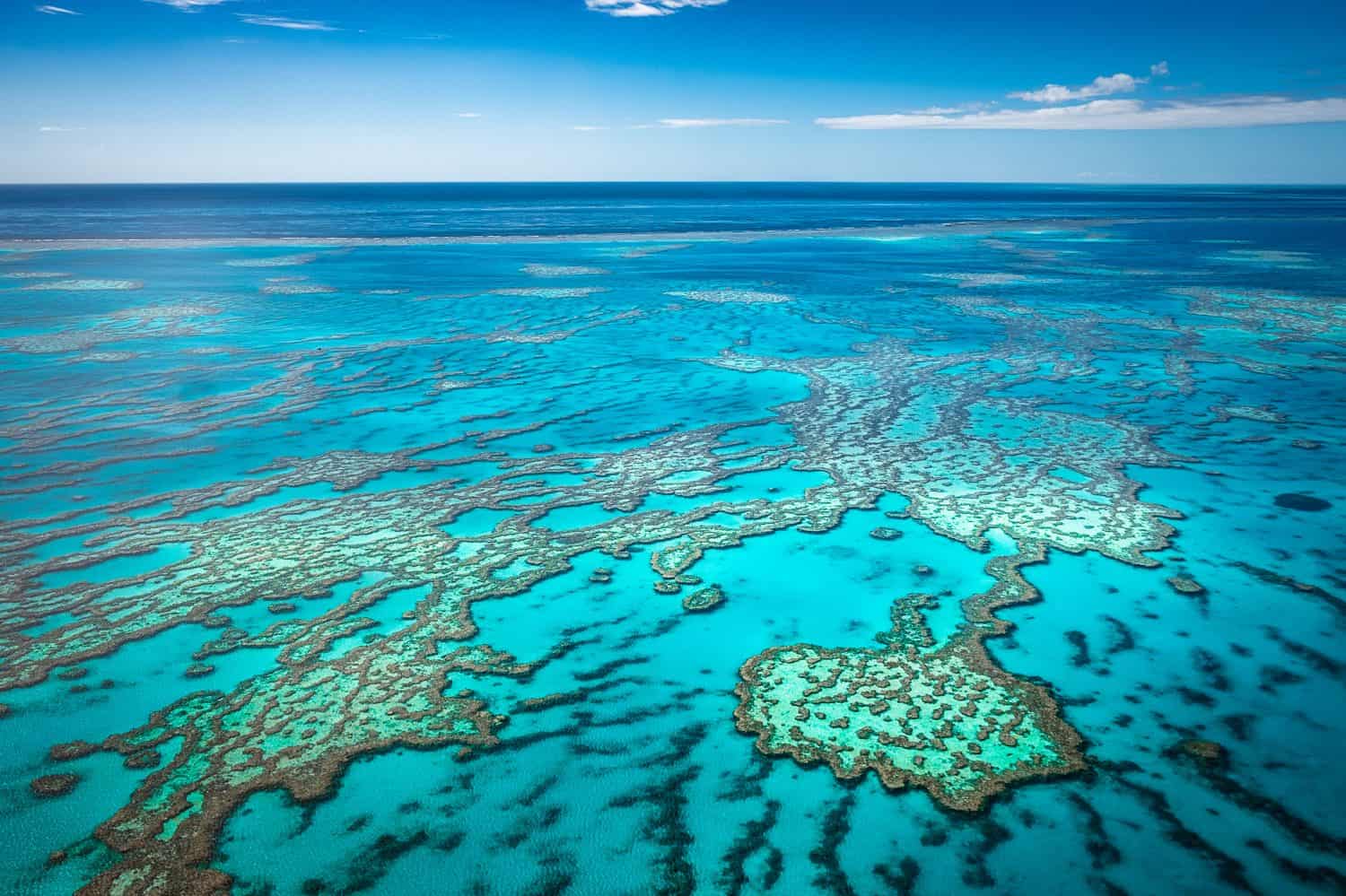
- Location: Australia
The Great Barrier Reef is the largest living structure on earth, spanning over 1,400 miles. You can even see it from space. Breathtakingly beautiful, the reef is home to around 3,000 coral, while several species of animals depend on it to survive. These animals include sawfish, inshore dolphins, seahorses, sponges, and many more.
The Great Barrier Reef is in danger of disappearing altogether, and many are working hard to save what remains.
Grand Prismatic Spring
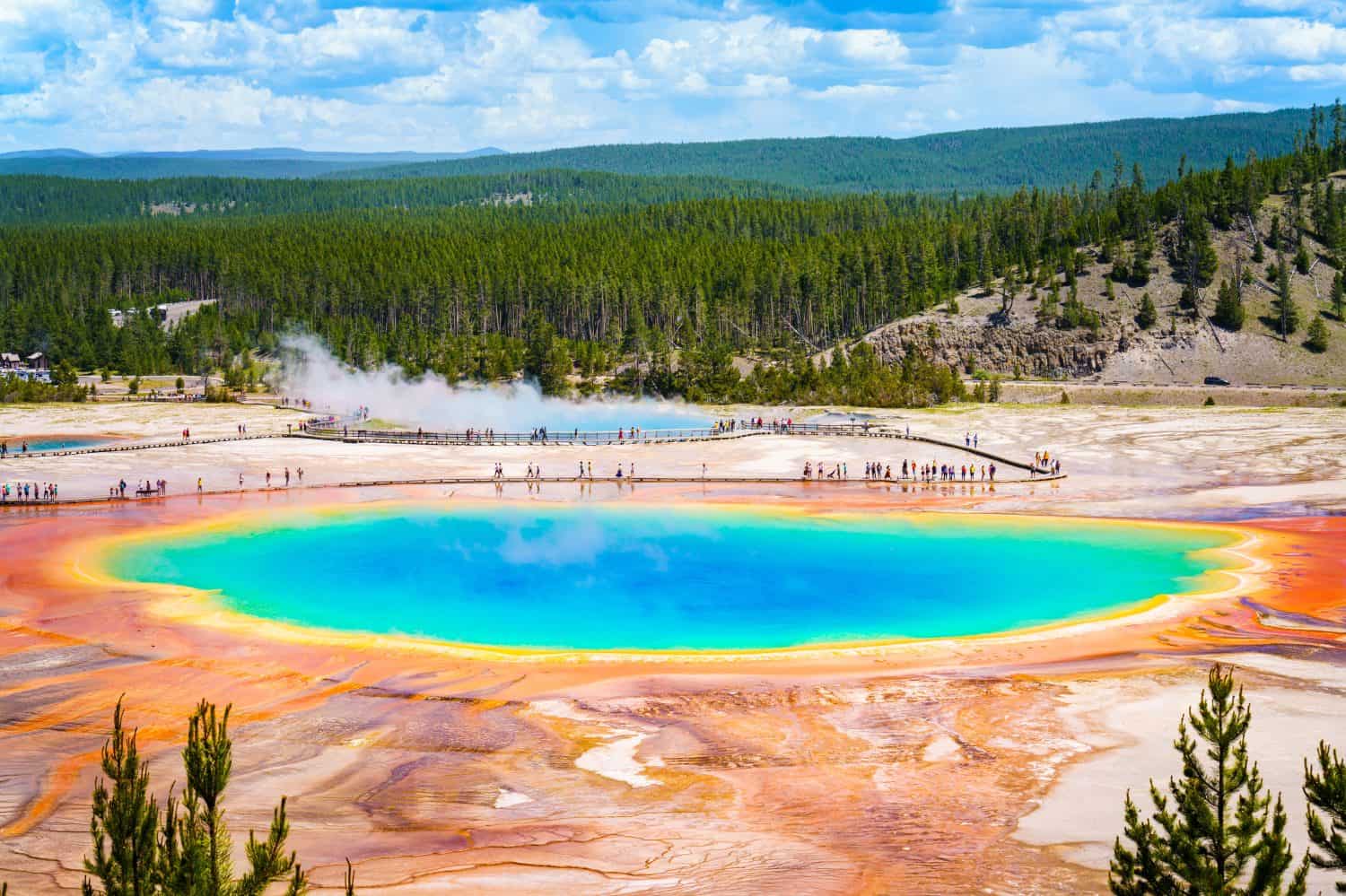
- Location: Yellowstone National Park in Wyoming
The Prismatic Spring is quite grand and located in Yellowstone National Park. Many stand in awe of its rainbow colors and size. The Grand Prismatic Spring is 370 feet long, larger than a football field. However, what’s truly beautiful are the orange, yellow, green, and blue shades that coexist within the spring.
The outer layers of green, orange, and yellow rings are caused by the species of thermophile bacteria, or heat-loving bacteria, that live in the cool water. At the same time, the spring’s gorgeous blue center results from the blue wavelengths being scattered by the water.
Himalayan Mountains
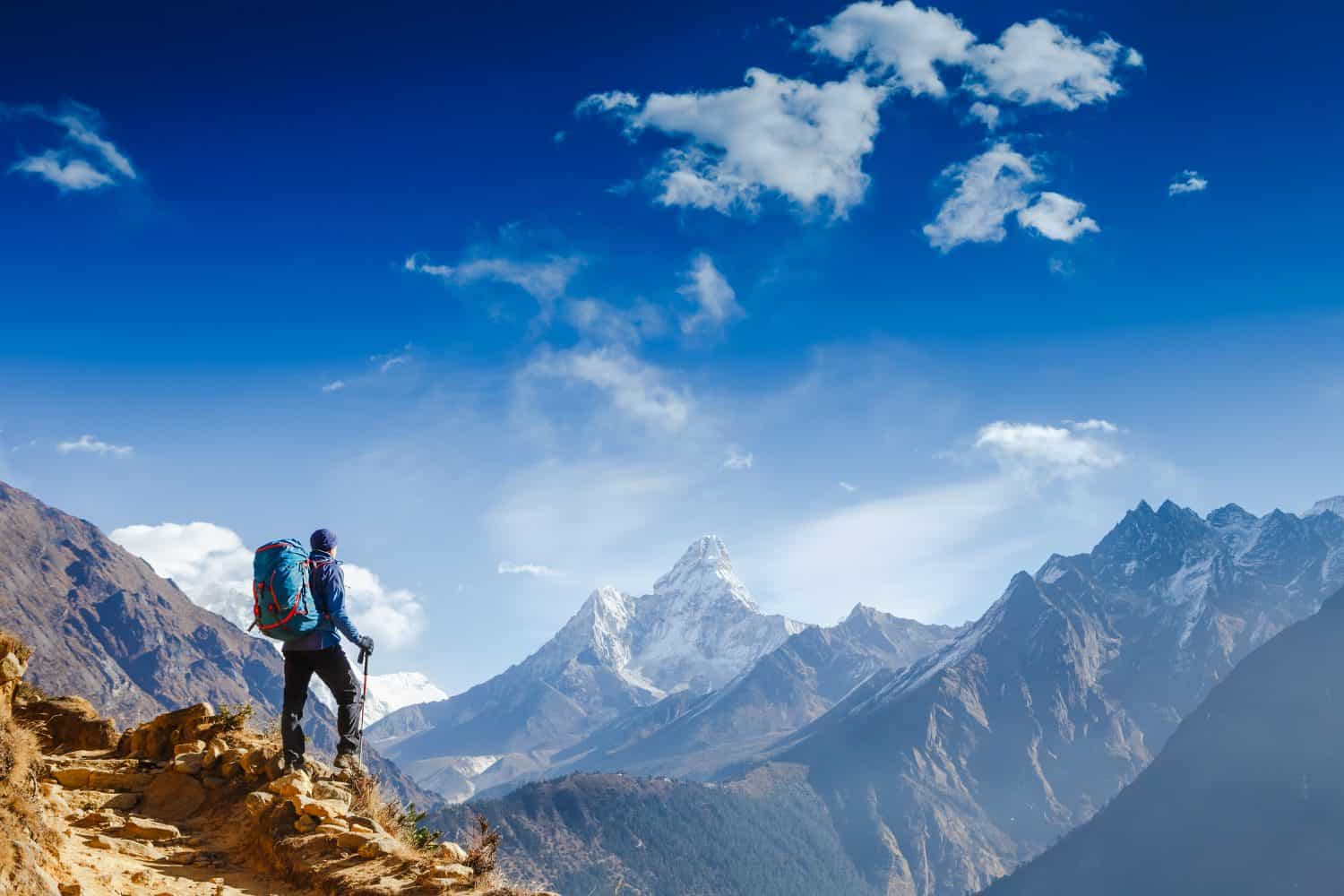
- Location: Nepal and Tibet
The Himalayan Mountains, located between Nepal and Tibet, are stunning. Within them is Mount Everest, the highest peak on earth at 29,032 feet. However, the area is not just dominated by tall, snow-capped mountains. Valleys and glacial lakes surround it, lending spectators an incredible view.
Desert Sand Dunes
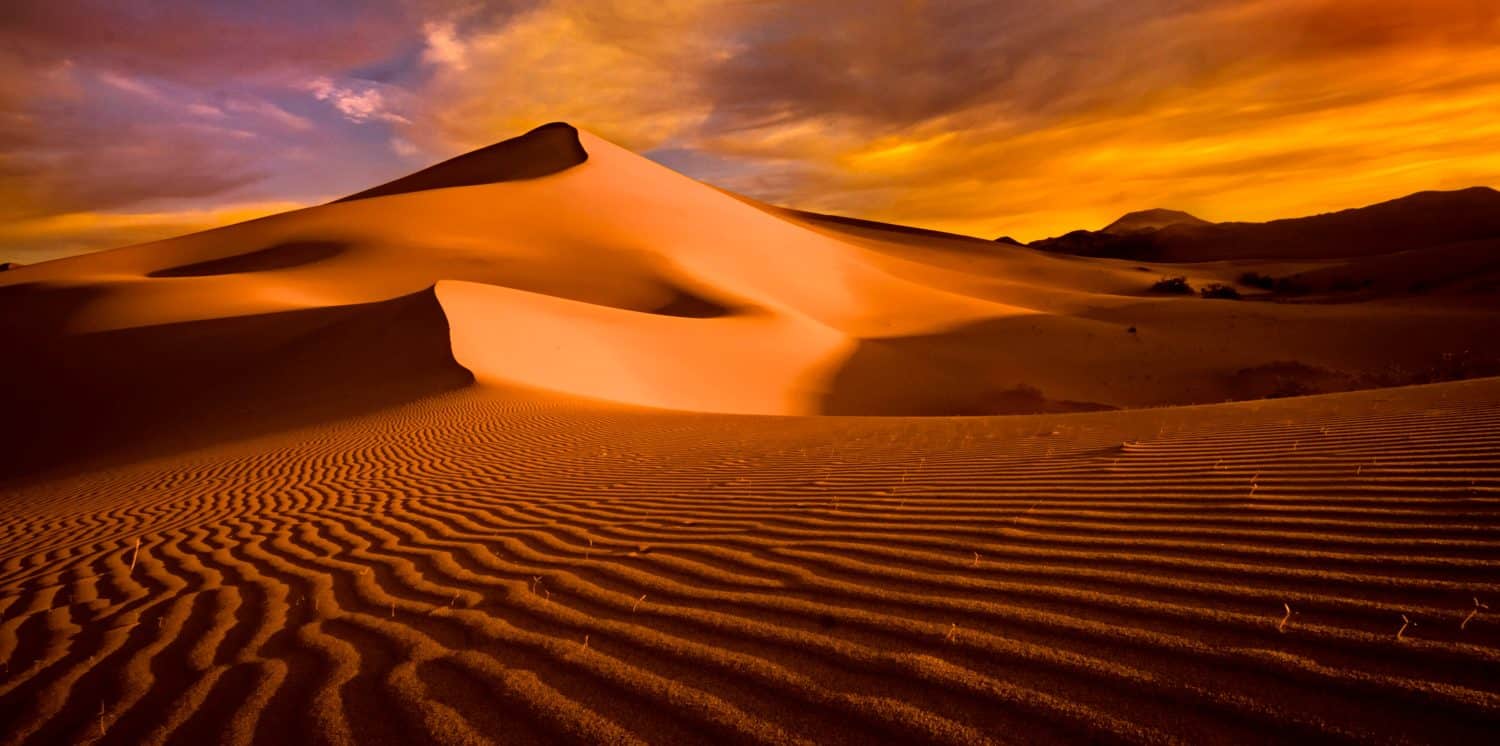
- Location: South Africa
Have you ever wondered what makes sand dunes so unique? The patterns of the dunes are created by the wind, which carries sand to a new location. Sand often piles up, creating small hills and crevices in the desert.
While simple, the creation of these desert sand dunes is pretty neat to look at.
Jeita Grotto
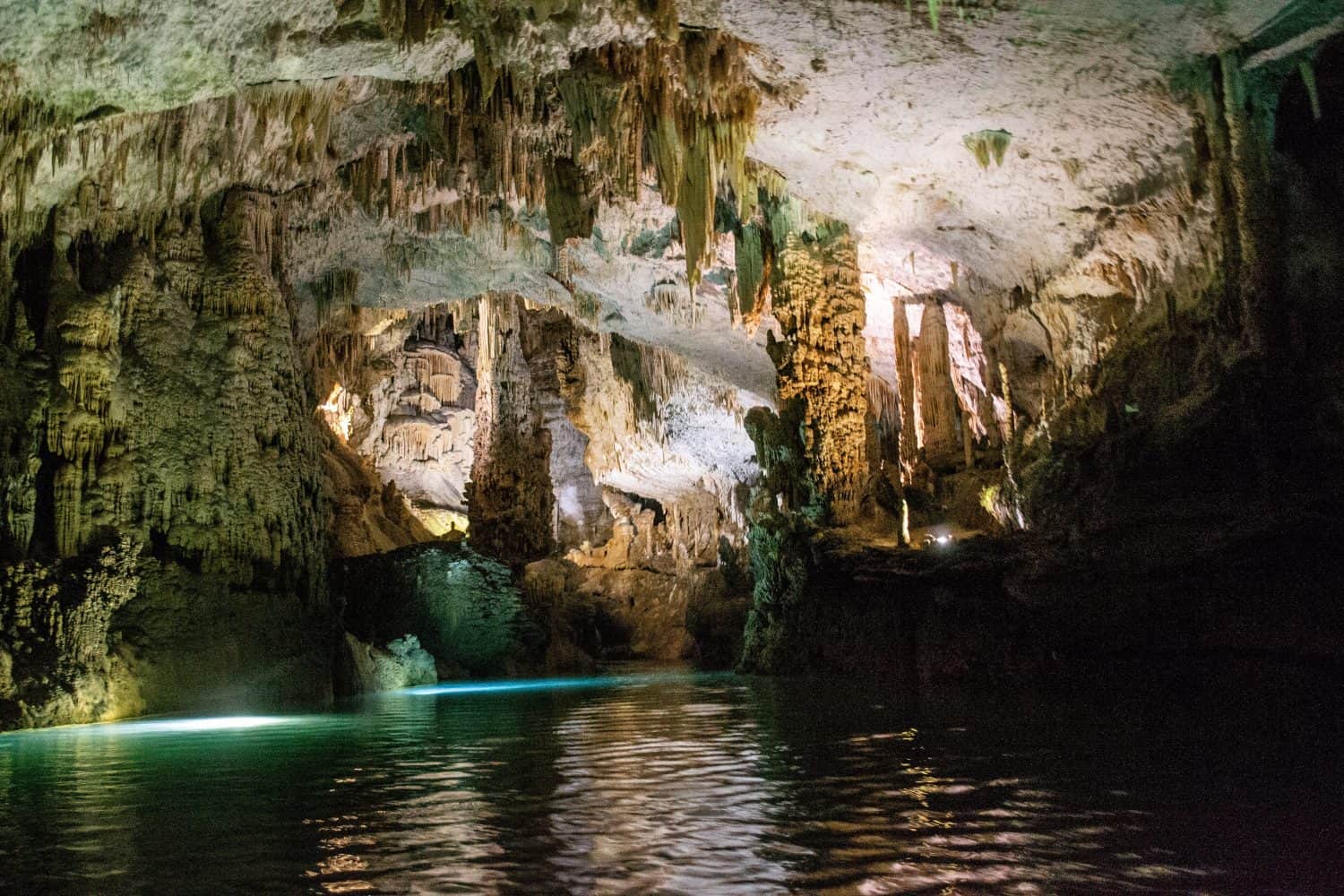
- Location: Lebanon
The Jeita Grotto is a long cave in Lebanon. It formed when limestone rock was dissolved by acidic rainwater, leading to many caves and tunnels.
The Jieta Grotto’s history dates back to the ancient period, and it’s also believed that it was once used to create swords.
Iguazu Falls
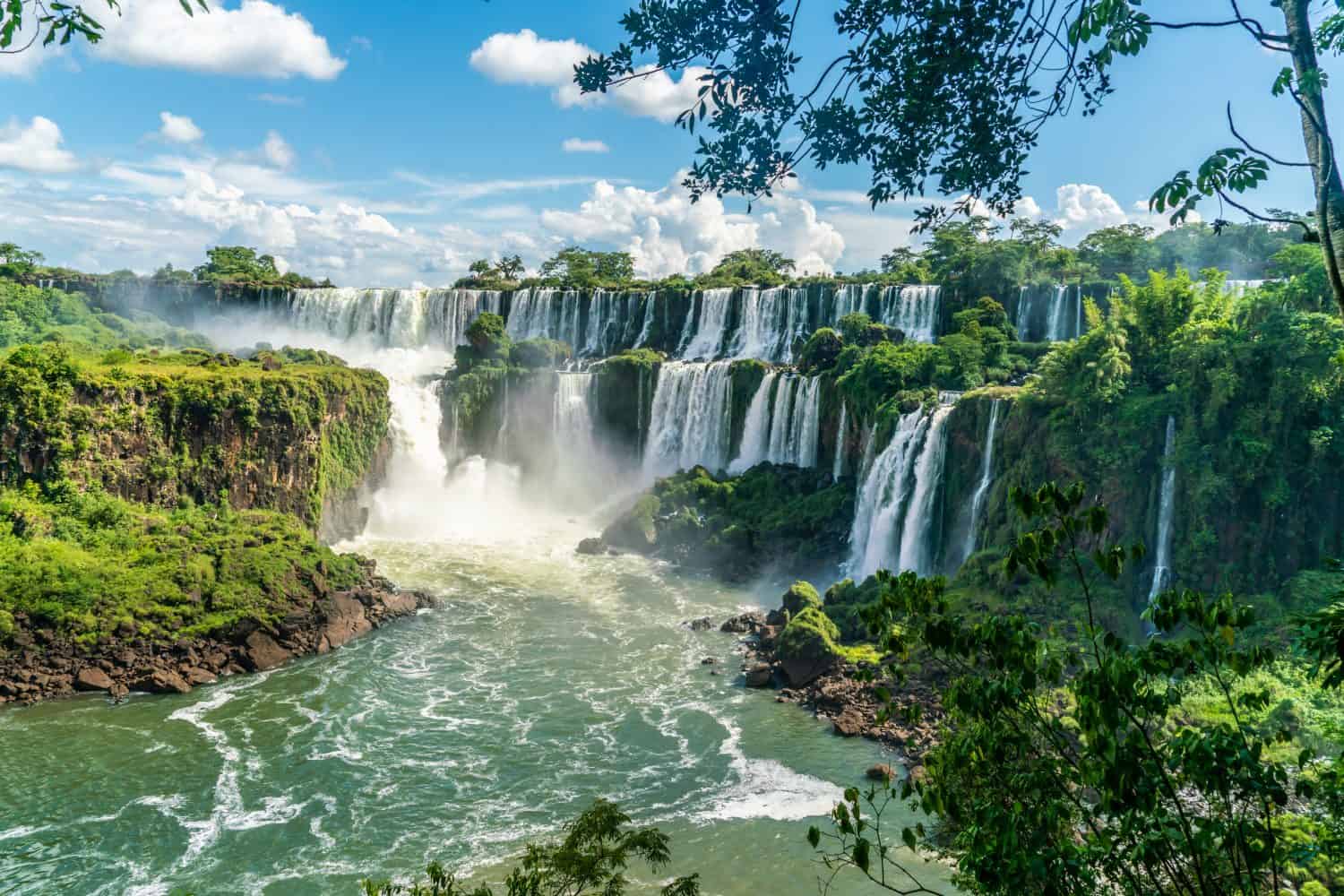
- Location: Argentina and Brazil
The world has an abundance of waterfalls, but Iguazu Falls may be the most beautiful. The Iguazu Falls can be seen in Brazil and Argentina. On the Brazilian side, visitors will see breathtaking and dramatic sights.
The Falls have around 275 waterfalls, are more than 260 feet tall, and are over 1.5 miles wide. Talk about incredible!
Salar de Uyuni
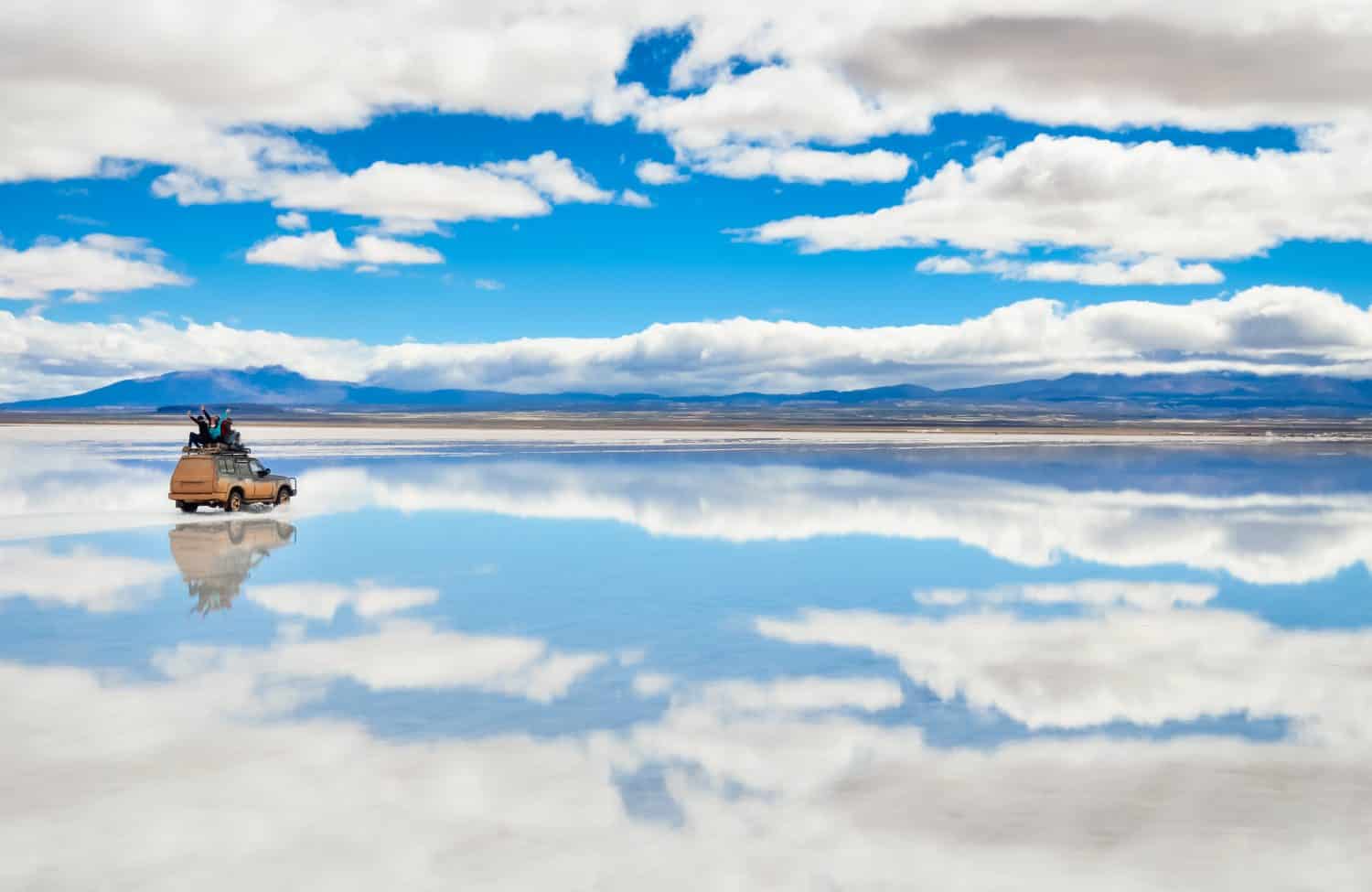
- Location: Bolivia
The Salar de Uyuni salt flat is so breathtaking that you may hardly believe your eyes. At around 10,582 kilometers, it is the largest salt flat in the world. While there, you can visit its many lakes, the train graveyard, and even Isla Incahuasi, which contains cactus species that are more than 100 years old.
However, the most stunning part of the Salar de Uyuni is the mirror effect. This happens after rainfall when a thin layer of water covers the salt flat, reflecting the sky above. This optical illusion makes you feel like you are walking in the clouds.
Also, a scene from Star Wars was filmed here!
Angel Falls
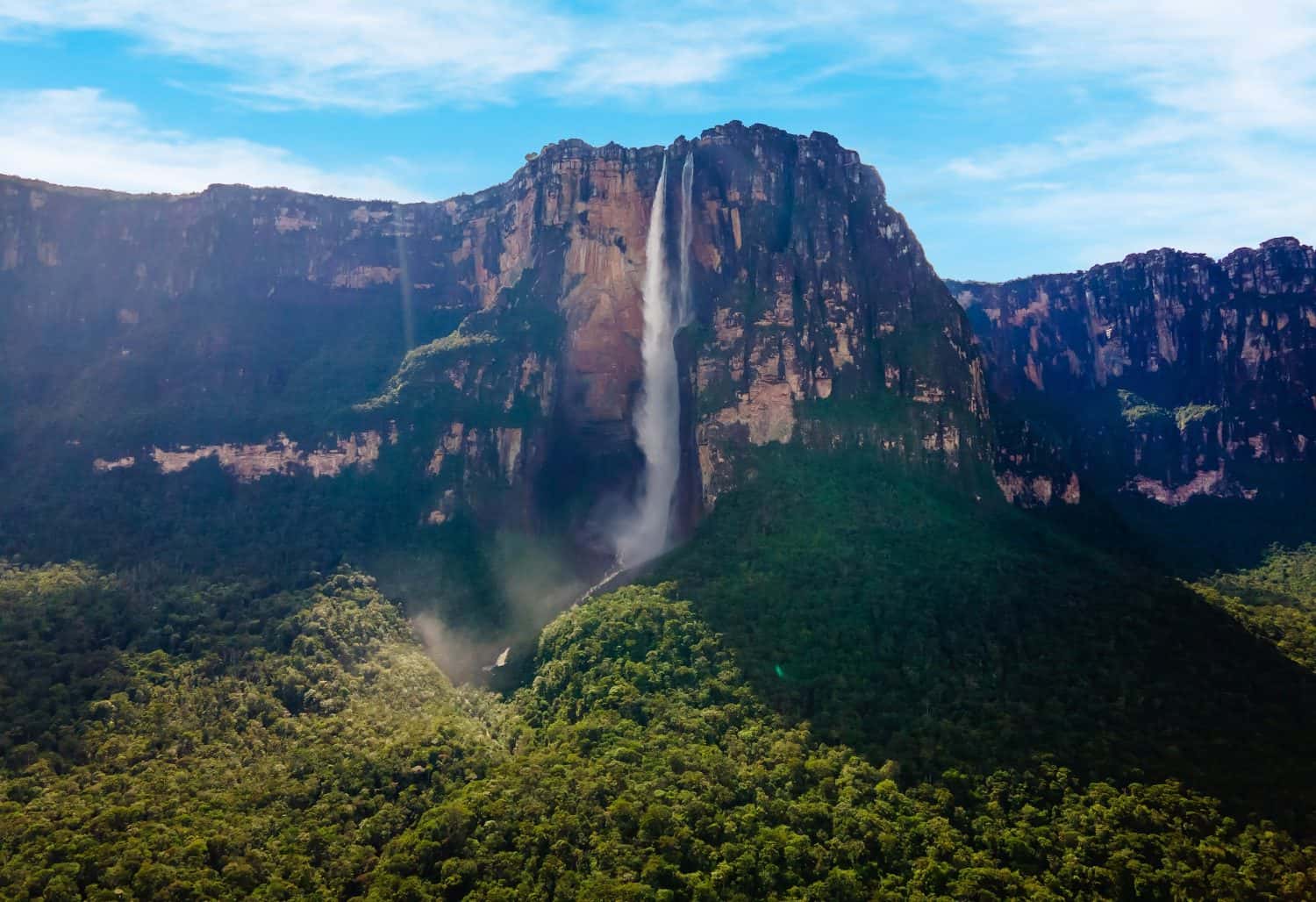
- Location: Venezuela
Angel Falls in Venezuela is the tallest uninterrupted waterfall in the world, at 979 meters. The falls drop over Auyan Tepui, a tabletop mountain. While many beautiful waterfalls worldwide exist, Angel Falls is spectacular simply for its pure height.
An interesting fact is Angel Falls inspired the Disney movie “Up.”
Colca Canyon
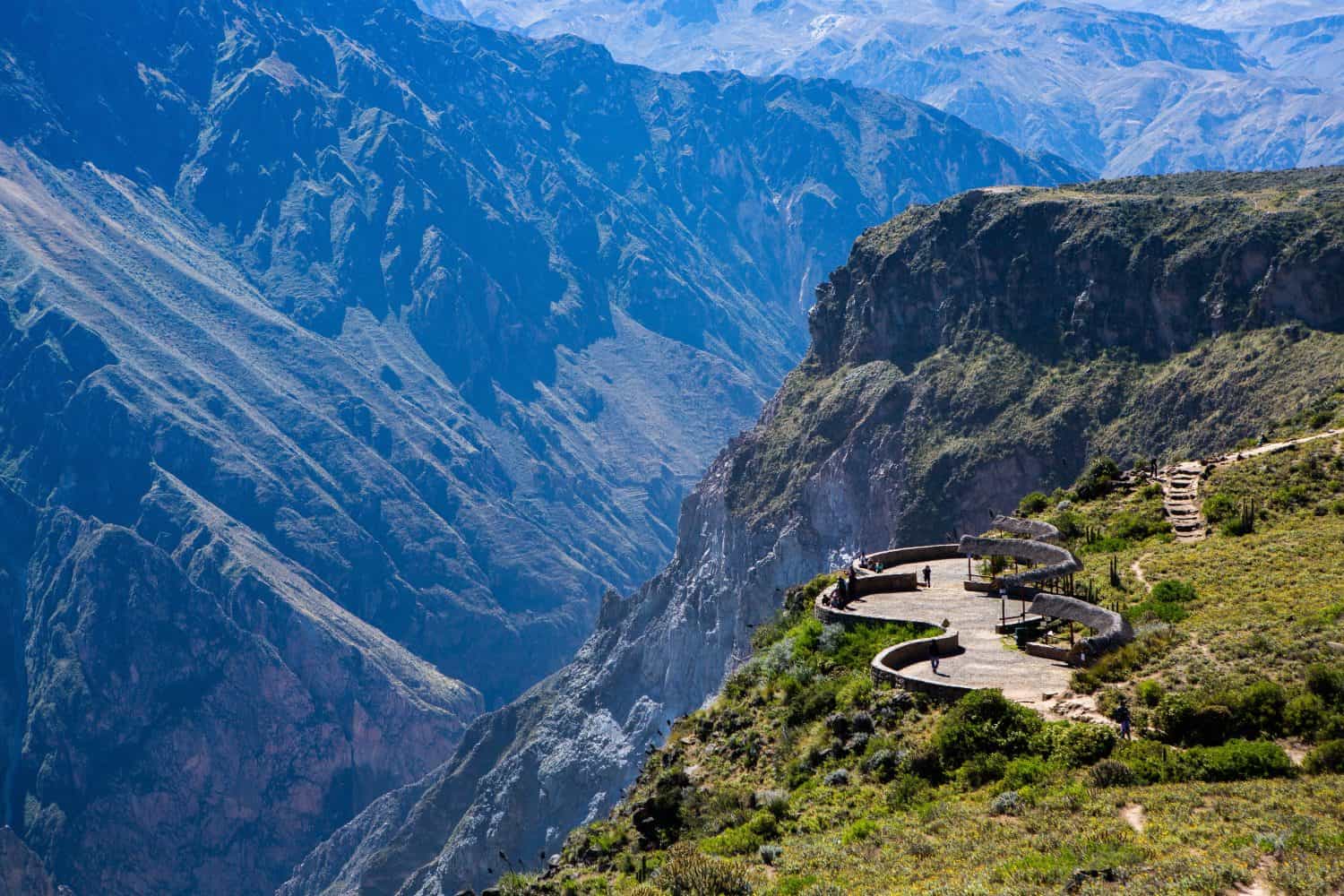
- Location: Peru
Colca Canyon is one of the deepest canyons in the world. It is almost two times deeper than the Grand Canyon, which is located in the United States.
Colca Canyon is also home to the Andean Condor, one of the largest flying birds, with a 10- to 12-foot wingspan.
Perito Moreno Glacier
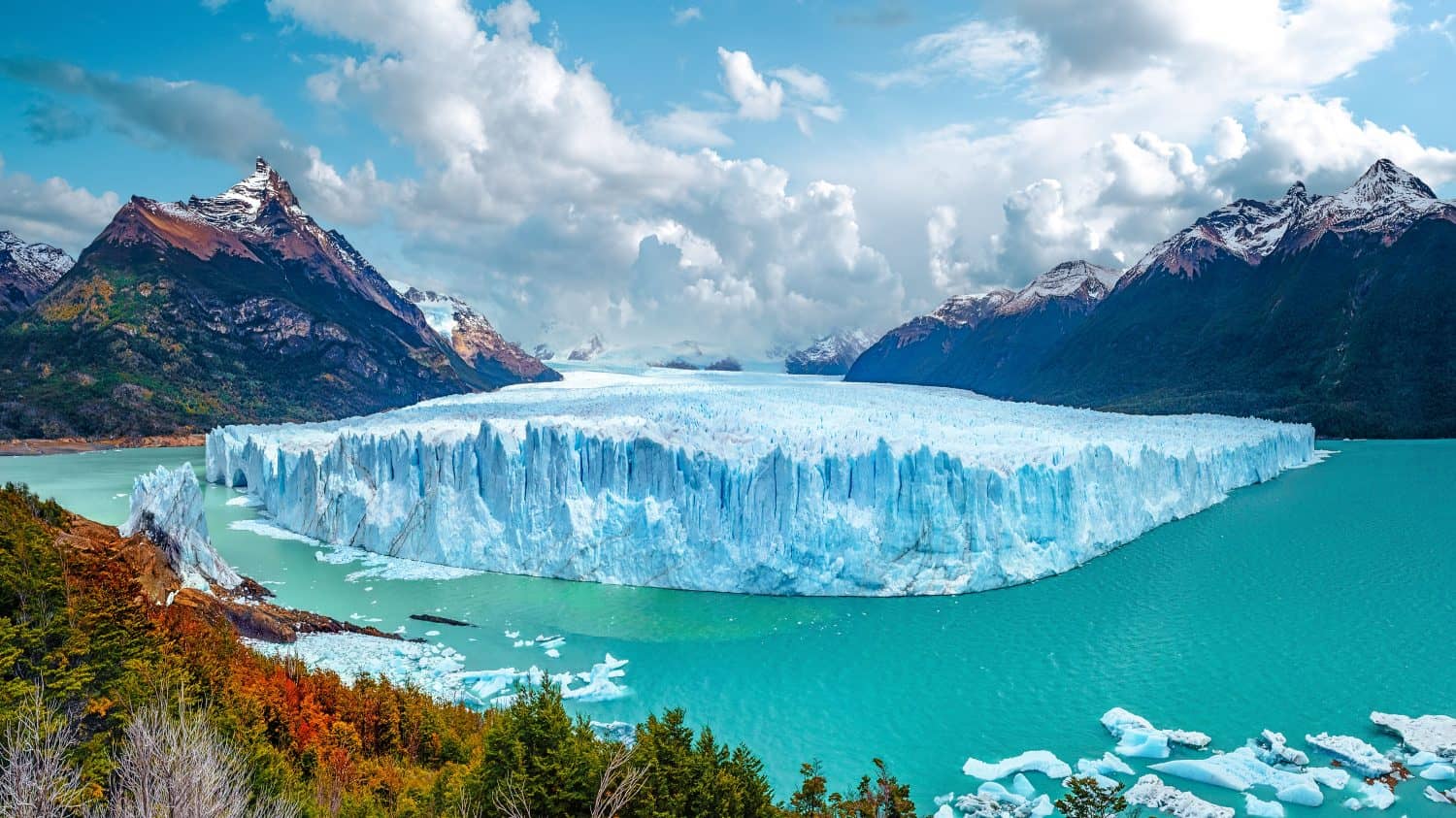
- Location: Argentina
Perito Moreno Glacier is continuously growing in size. Glaciers form when snow falls and accumulates faster than it melts. While most glaciers slowly shrink, the Perito Moreno is growing.
As the ice grows, pieces break off, falling below and leaving icebergs in the lake.
Cano Cristales River
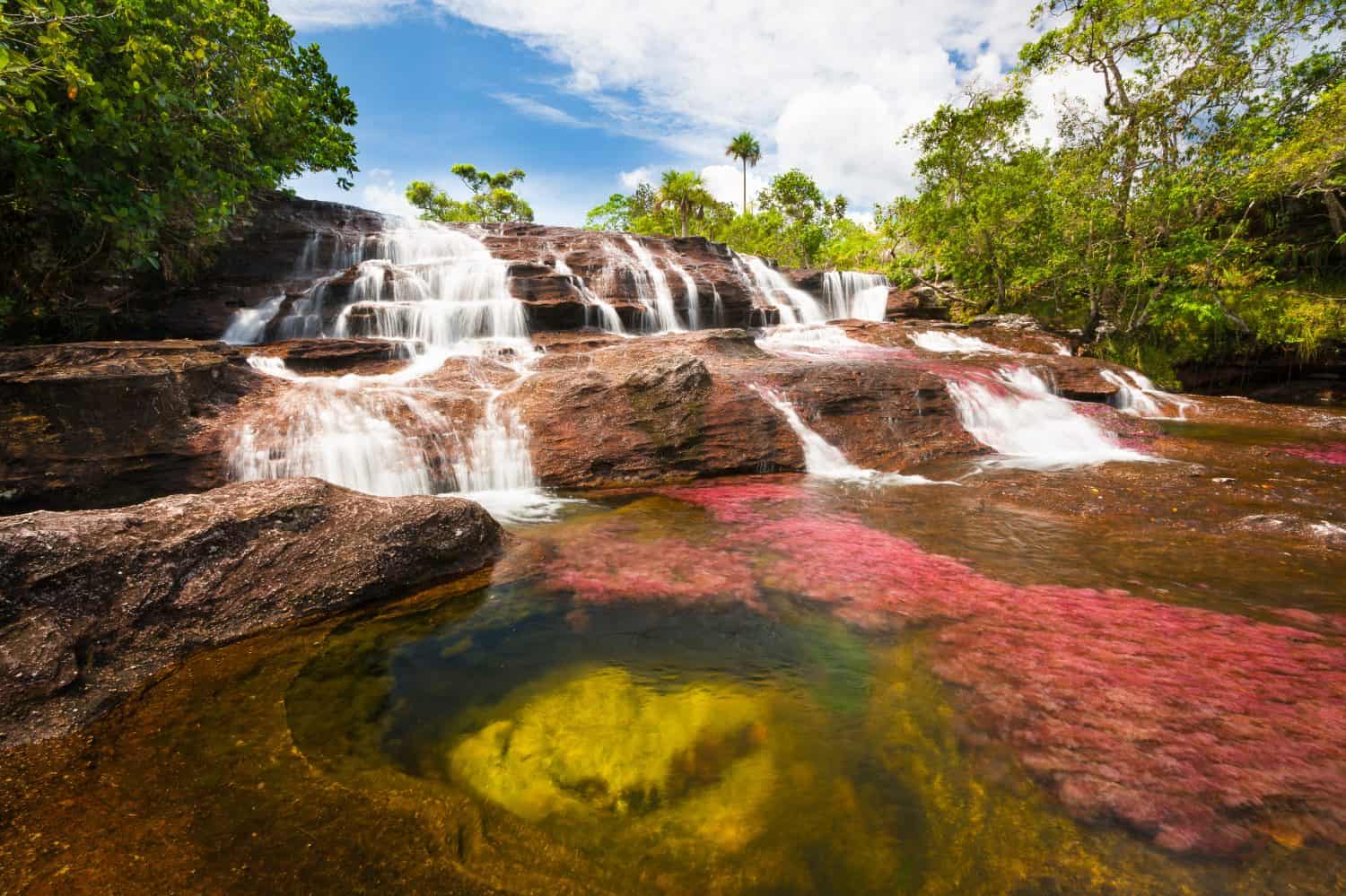
- Location: Colombia
Cano Cristales River has earned several nicknames, such as “liquid rainbow,” “melted rainbow,” and “river of five colors.” The nicknames are given because, far beneath the waters, it’s possible to see different colors, such as yellow, red, green, purple, orange, and more. It’s a beautiful sight to behold.
However, the science behind the many colors is simple. It’s because of Macarenia clavigera, an aquatic plant. This weed sticks to the quartzite rocks in the river, and in the right conditions, tourists can see the vibrant colors.
Antelope Canyon
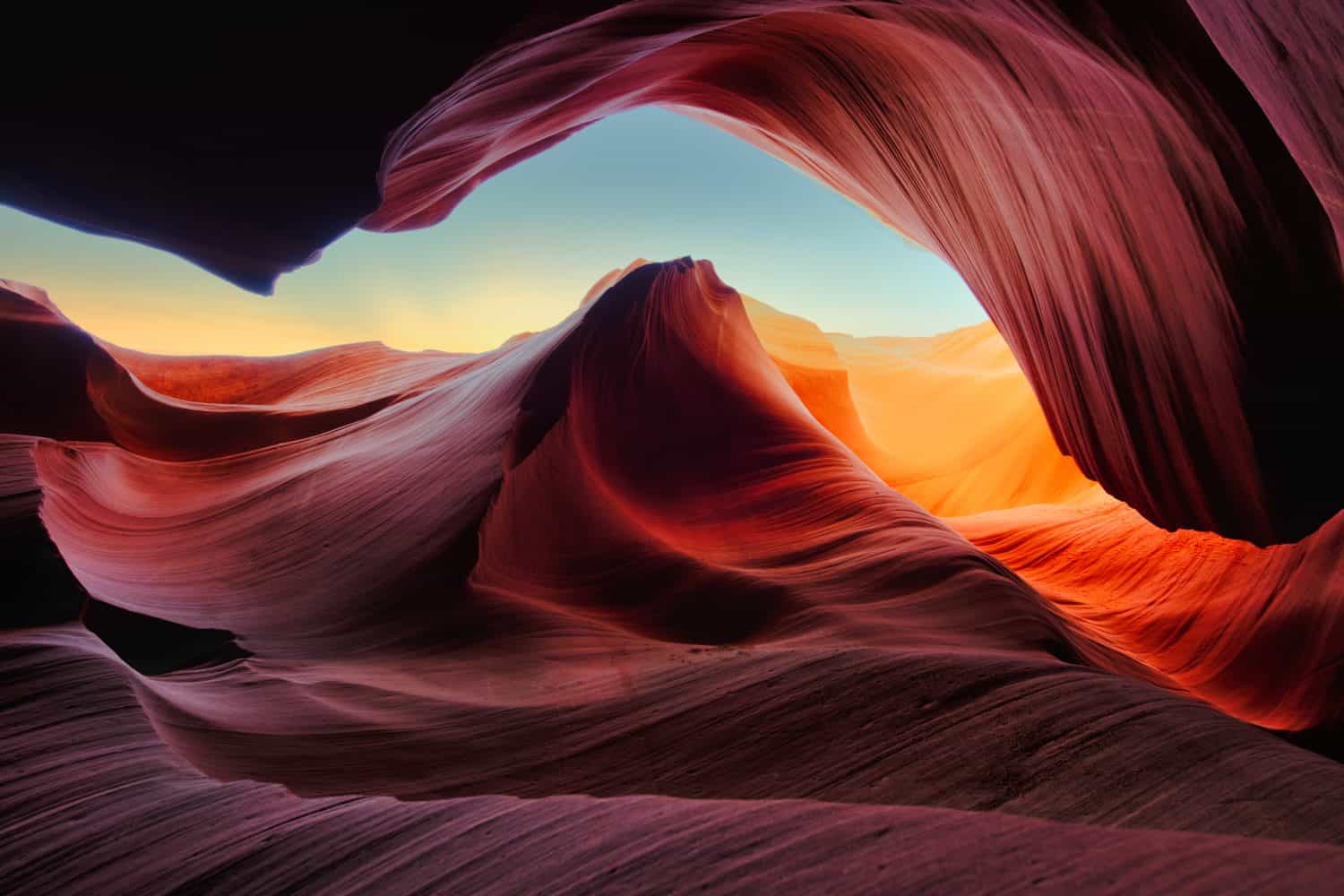
- Location: Arizona
Antelope Canyon is a tourist hotspot. The sandstone walls are a glorious hue of red and orange, and the upper canyon is easily accessible for many. Centuries of erosion from wind and water are responsible for the beautiful sandstone walls, textures, and bends.
Giant’s Causeway
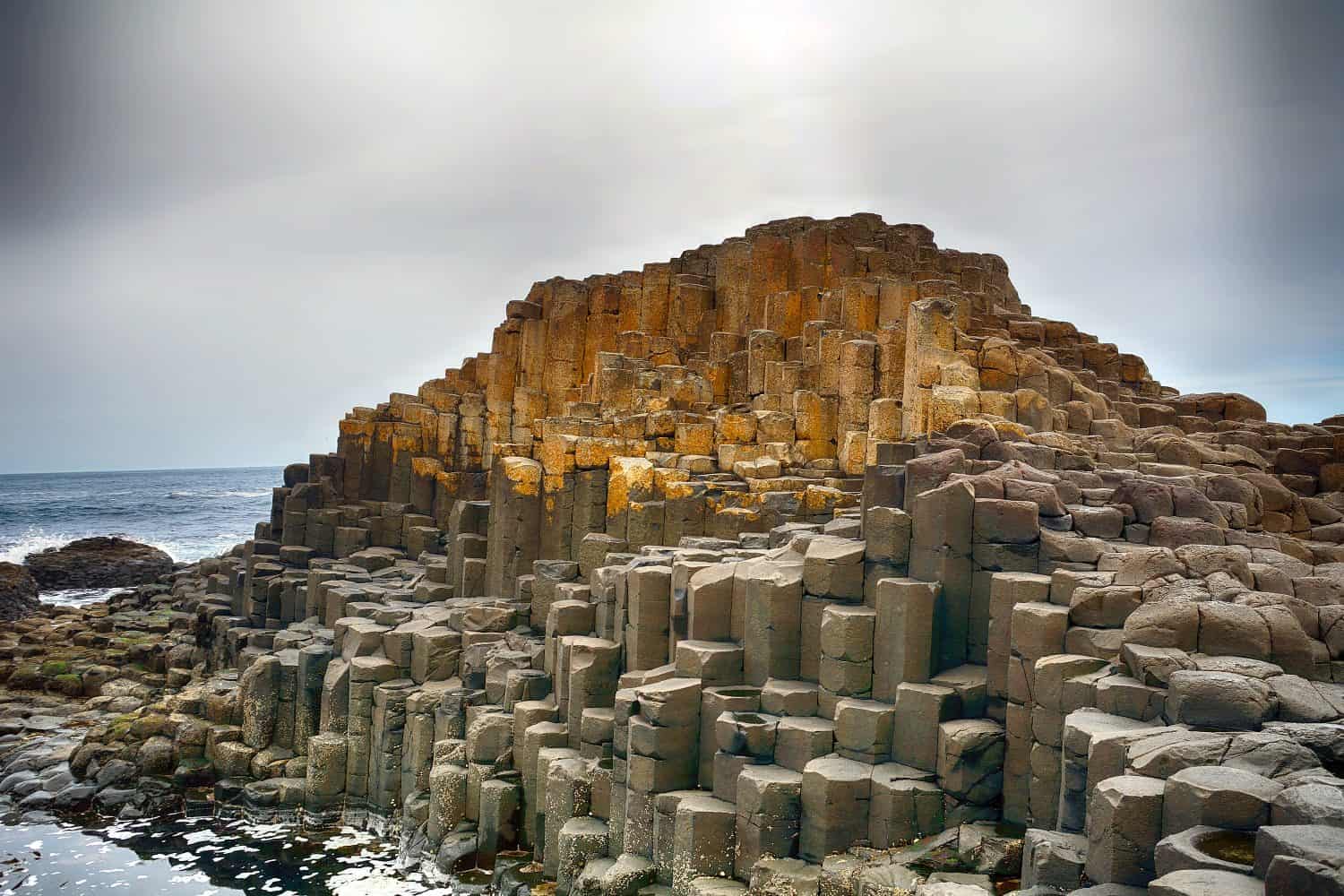
- Location: Northern Ireland
Giant’s Causeway in Northern Ireland is one of the world’s most unique natural wonders. It comprises approximately 40,000 basalt stones, which vary in height and size. These basalts formed after the earth’s surface rifts started forming. Rifts formed cracks, which allowed lava and molten rock to push up and out. After centuries of lava flowing out and erosion, the Giant’s Causeway was formed.
With the Giant’s Causeway comes a legend about an Irish giant, Finn McCool. The story goes that he created the causeway while moving across the Irish Sea. You can even see the giant’s “boot” (a large, boot-shaped rock) in the bay.
Thor’s Well
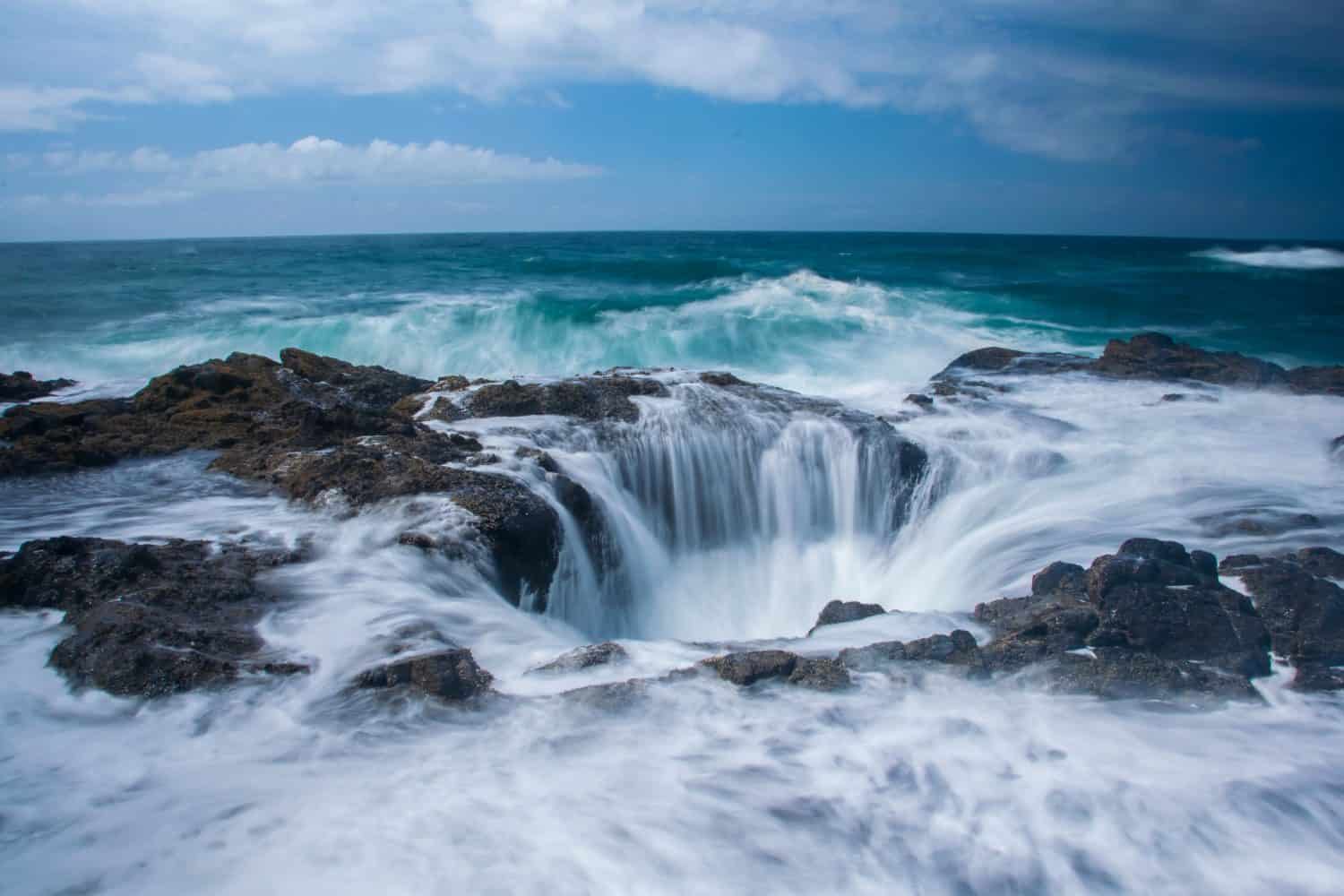
- Location: Oregon
A gorgeous sight to behold, Thor’s Well seemingly continues into the abyss. However, many estimate it is around 20 feet deep. This sinkhole is made of basalt rock, with seawater draining into the hole. Thor’s endless vortex appearance happens when the tide pulls seawater back to sea.
A coastal expert, Gary Hayes, has stated that the formation of Thor’s Well and others most likely started as a sea well whose top collapsed.
The Waitomo Glowworm Caves
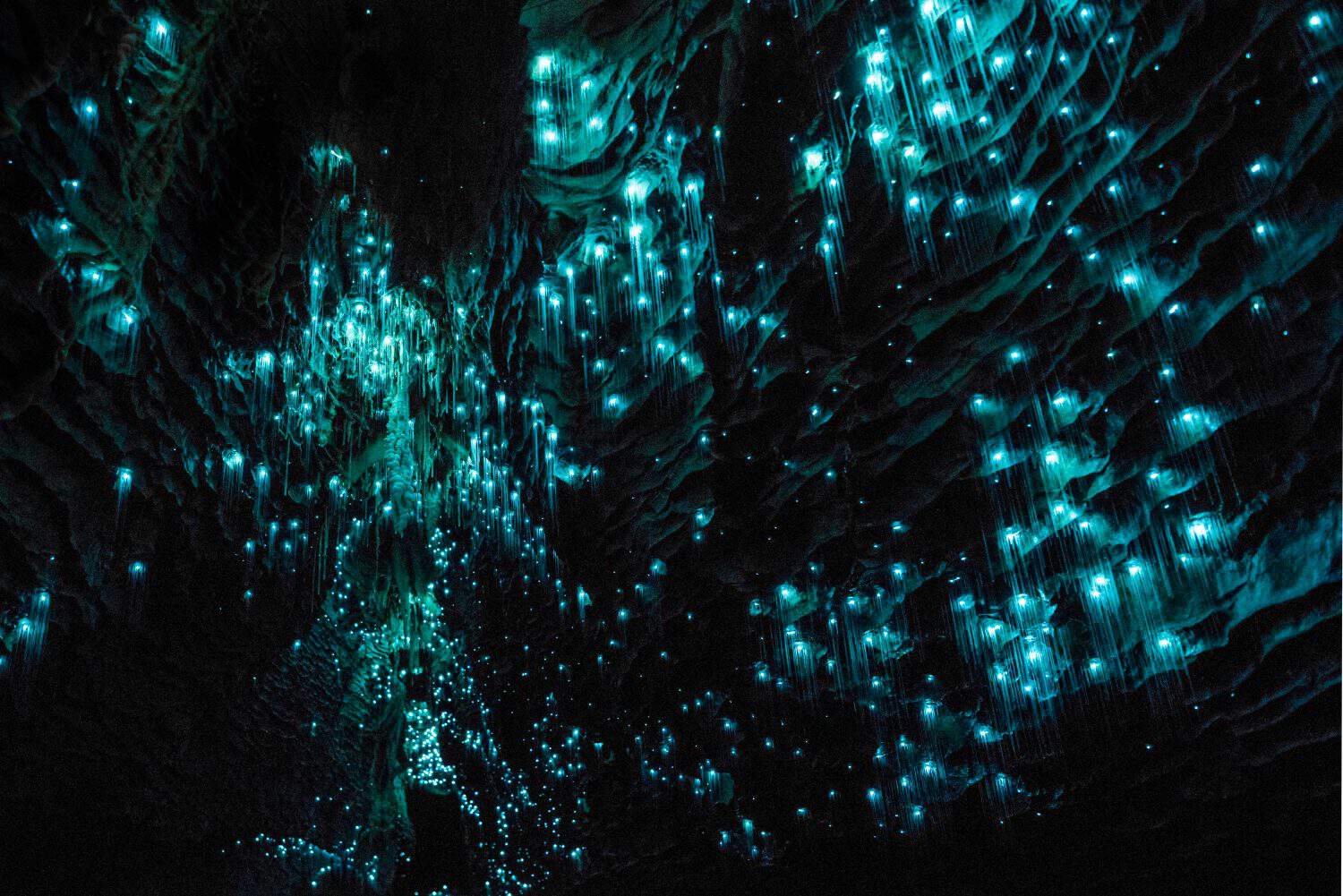
- Location: New Zealand
In New Zealand, the Waitomo Glowworm Caves are spectacular. The caves are limestone, with fossilized seashells, fish skeletons, and coral within. However, the glowworms that inhabit the space make the caves genuinely unique.
The glowworms emit a chemical that reacts with oxygen. This produces beautiful bioluminescence that gives off a dreamy glow within the caves.
Lake Hillier
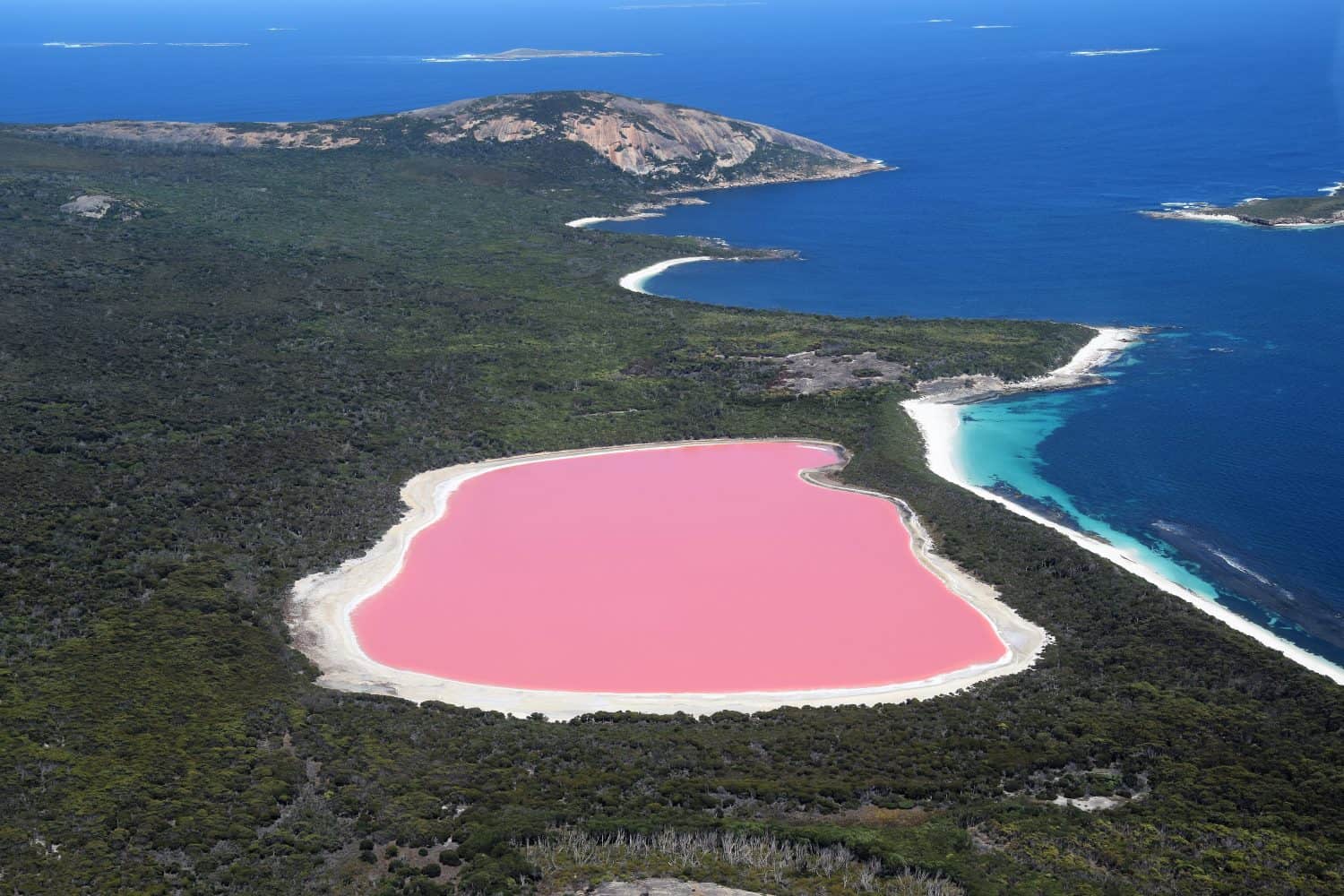
- Location: Australia
While you can’t take a dip in Lake Hillier, which is only viewable from above, it is pretty interesting to look at. The lake is a bubblegum pink, caused by microbes like algae and halobacteria. Additionally, much like the Dead Sea, Lake Hillier is very salty.
Mount Fuji
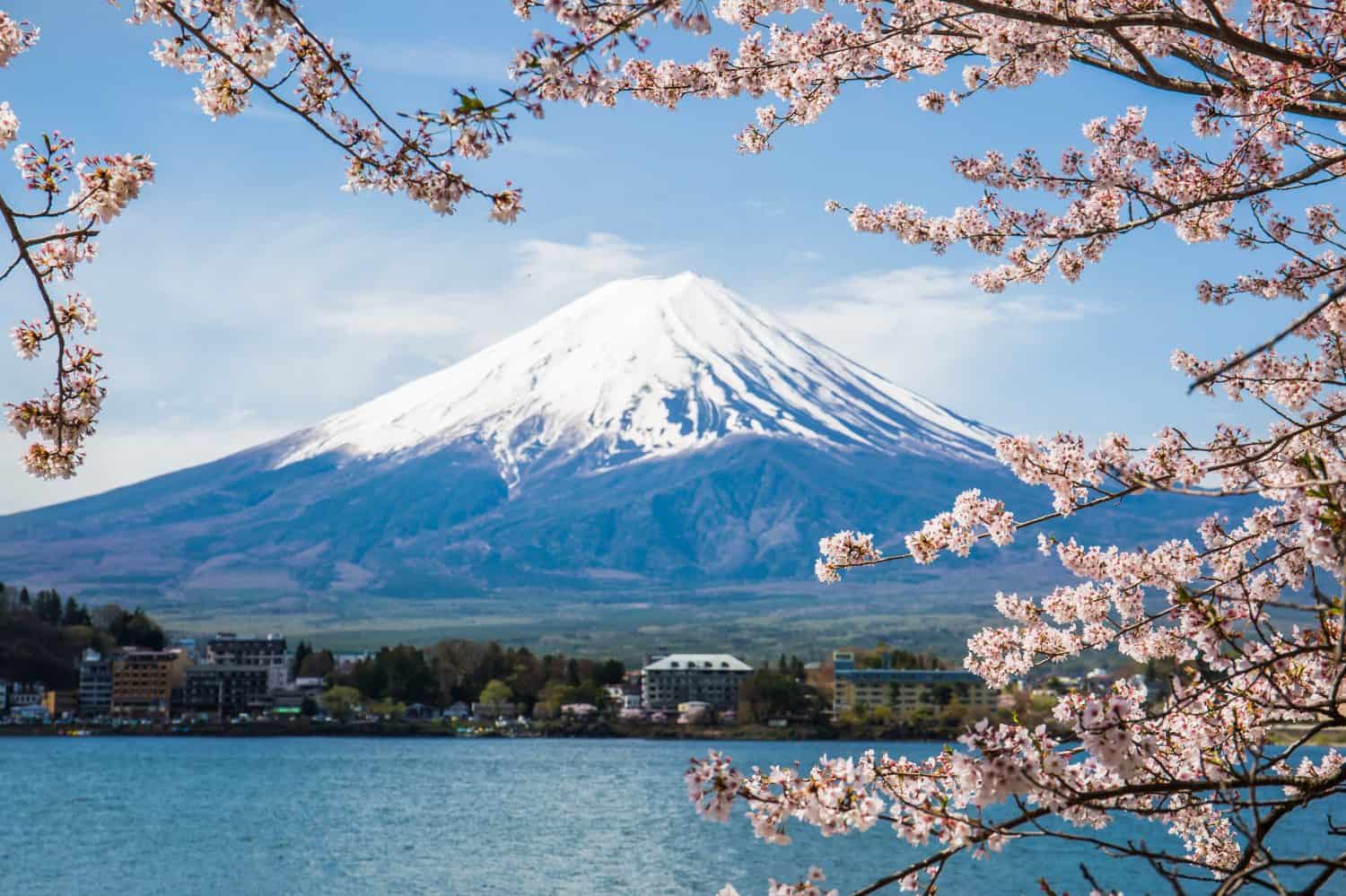
- Location: Honshu, Japan
Mount Fuji is a sacred site in Japan. The mountain is a symbol of the nation, and its beauty makes it a popular tourist attraction. It is symmetrical, large, and often described as majestic.
Marble Caves

- Location: Chile
When tourists see the outside of the Marble Caves in Chile, they may find it unimpressive. The outer part sits on Lake General Carrera and is simply stone-covered greenery. However, the view takes one’s breath away once one ventures inside.
The colors are magical, with the water reflecting blue, turquoise, white, and sometimes pink hues, depending on the time of year.
Zhangye Danxia Landform Geological Park
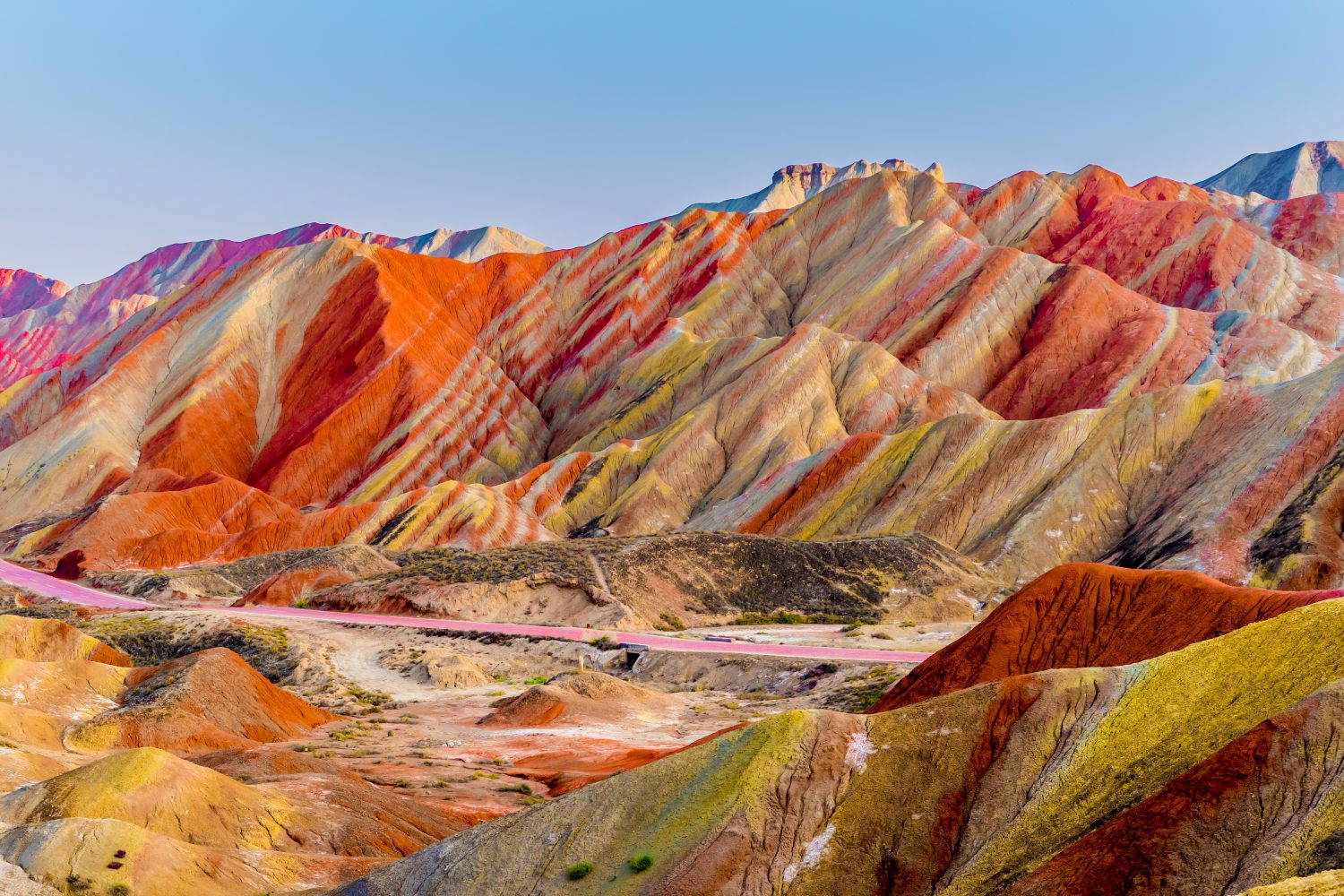
- Location: Gansu Province, China
Viewers who visit the Zhangye Danxia Landform will feel like they just stepped inside a magnificent painting. Across the hills and rocks, the captivating colors seem unreal. Thousands of years are to thank for this majestic wonder. The process involved sandstone and minerals laying on one another as the tectonic plates underneath shifted. Additionally, wind and rain contributed to the erosion of the hills, creating the beauty seen today.
Plitvice Lakes National Park

- Location: Croatia
Plitvice Lakes National Park has waterfalls, lakes, and gorgeous greenery. One of the most attractive features of this natural wonder is the crystal-clear water, which results from a mineral composition that leads to beautiful blue and green hues.
Of course, the water is tempting to swim in. However, swimming is banned to protect the delicate ecosystem.
Moraine Lake
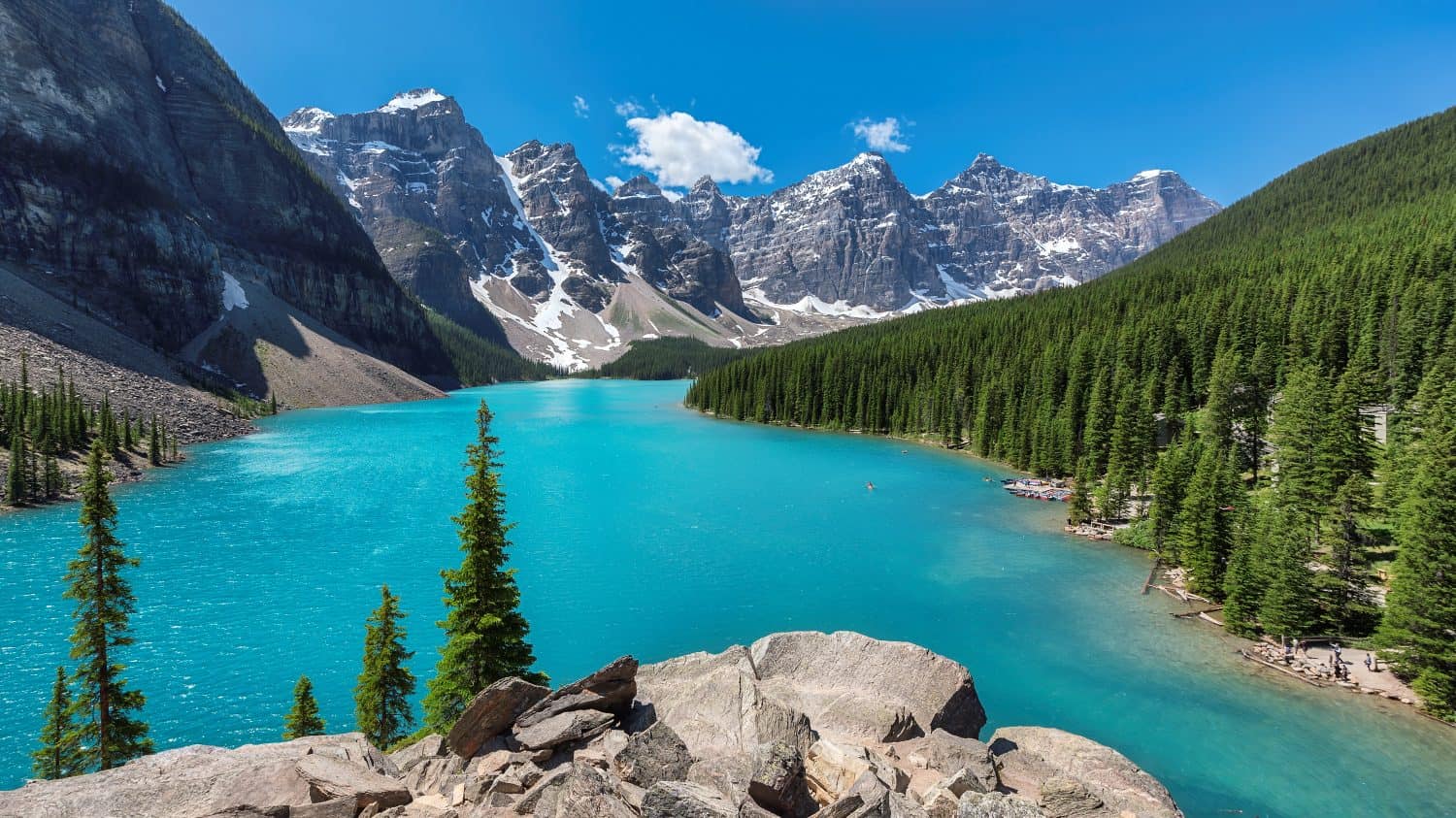
- Location: Alberta, Canada
Another crystal clear lake that is beyond stunning is Moraine Lake. The encircling mountains and boulders make the view even more spectacular.
Viewers may feel like they stepped straight into a Bob Ross painting.
Pools of Pamukkale

- Location: Denizli, Turkey
The pools of Pamukkale are considered a strange wonder and attract millions of tourists every year. It’s not hard to see why. Pamukkale means “cotton castle,” alluding to the gorgeous white terraces and hot springs.
The pools were formed by mineral-rich water sliding down the hills, leaving a residue white like cotton.
Black Sand Beaches
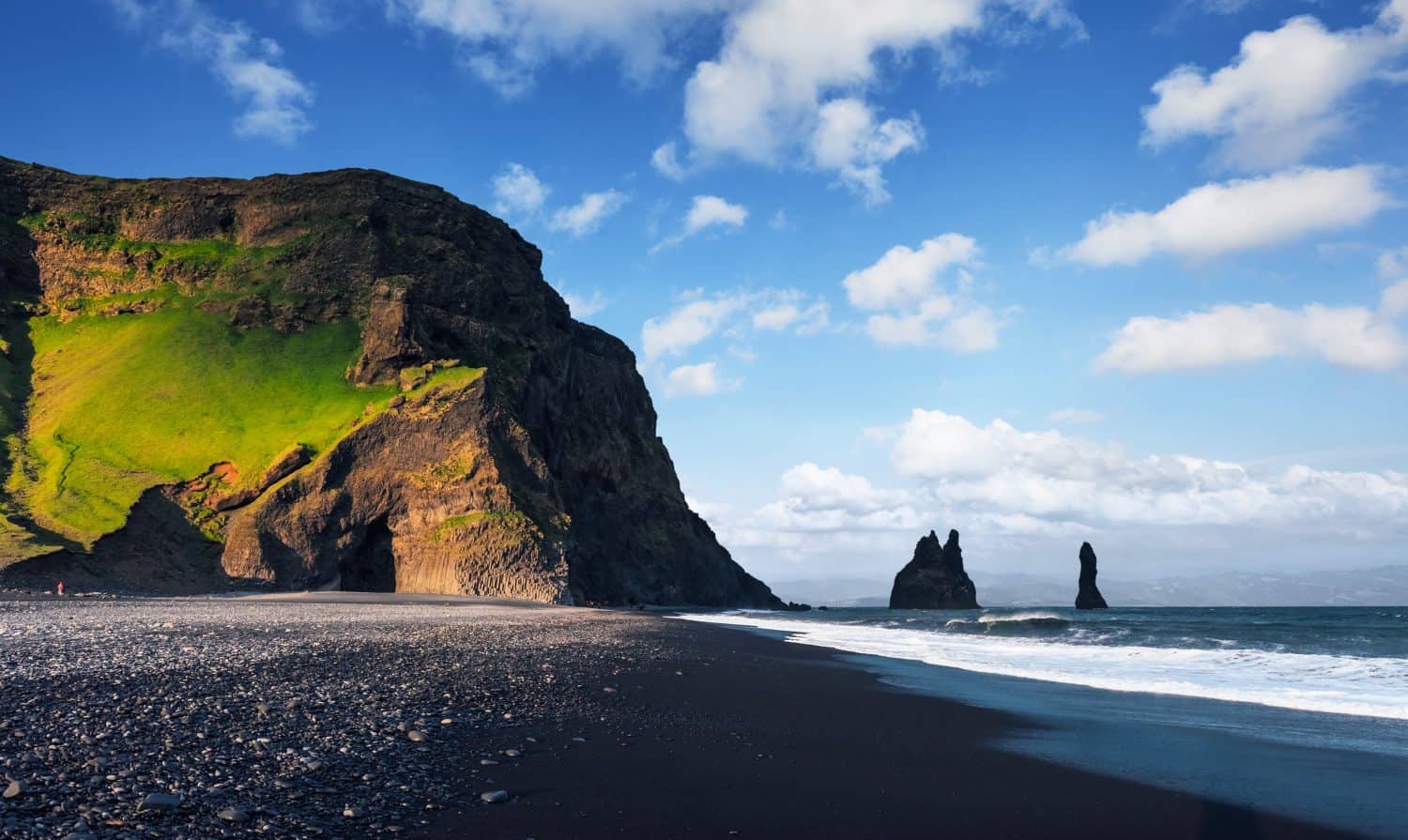
- Location: Iceland
The most popular black sand beach in Iceland is Reynisfjara, but several others exist. The beach is black because volcanic material eroded over time. This material is made up of basalt rock smashed into sand by the water and wind.
Interestingly, Reynisfjara was a filming location for “Game of Thrones.”
Gypsum Dunes in the White Sands National Monument
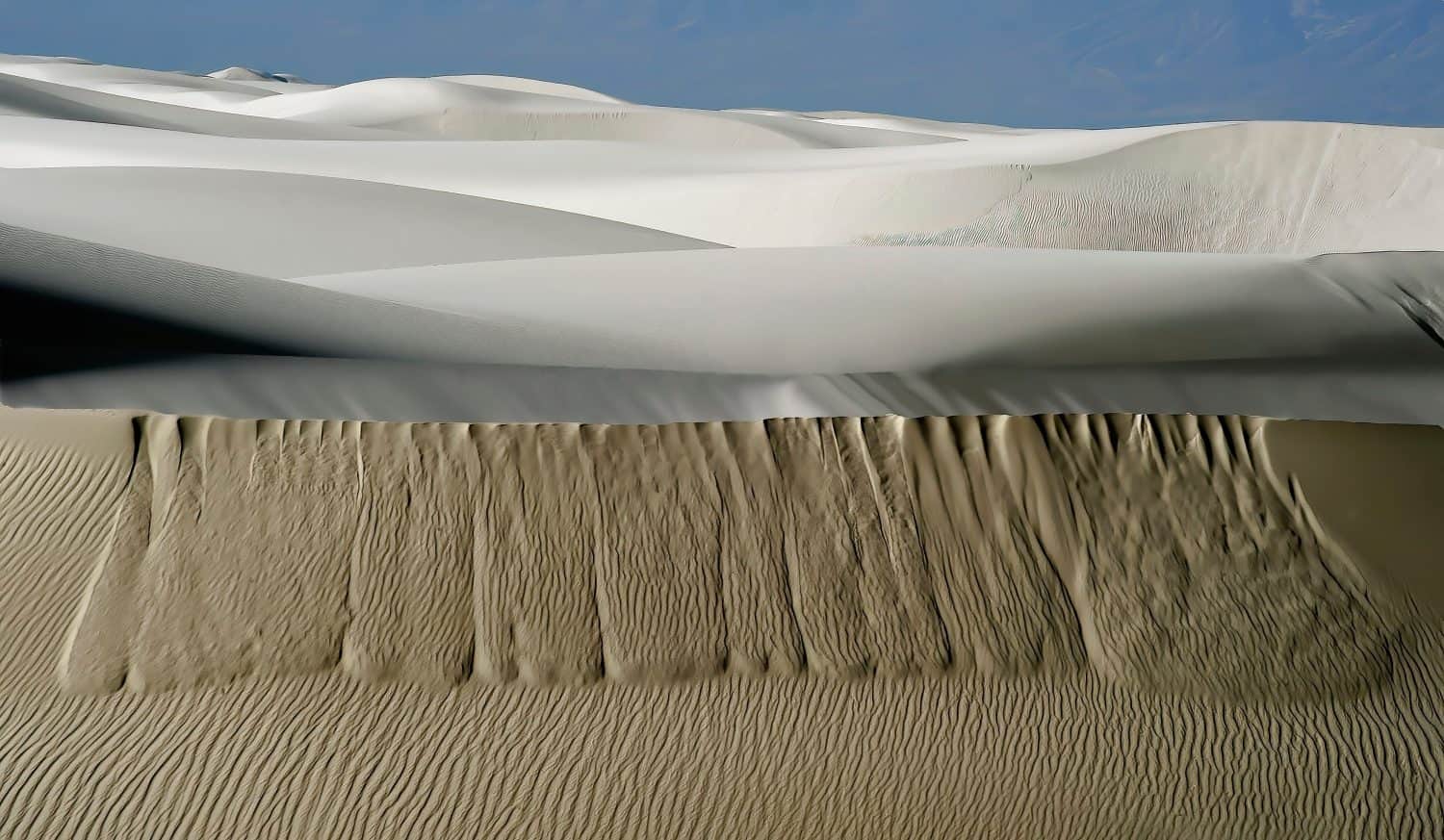
- Location: New Mexico
A long time ago, an ancient sea covered the Southwest. When the ancient sea evaporated, gypsum sand was left behind. Not only is the sand itself gorgeous, but it’s not quite like regular sand either. It is not sticky or itchy.
Gypsum sand is cool and soft, and when the sun hits it just right, it appears to sparkle like diamonds, creating a stunning sight.
Mosi-oa-Tunya/Victoria Falls
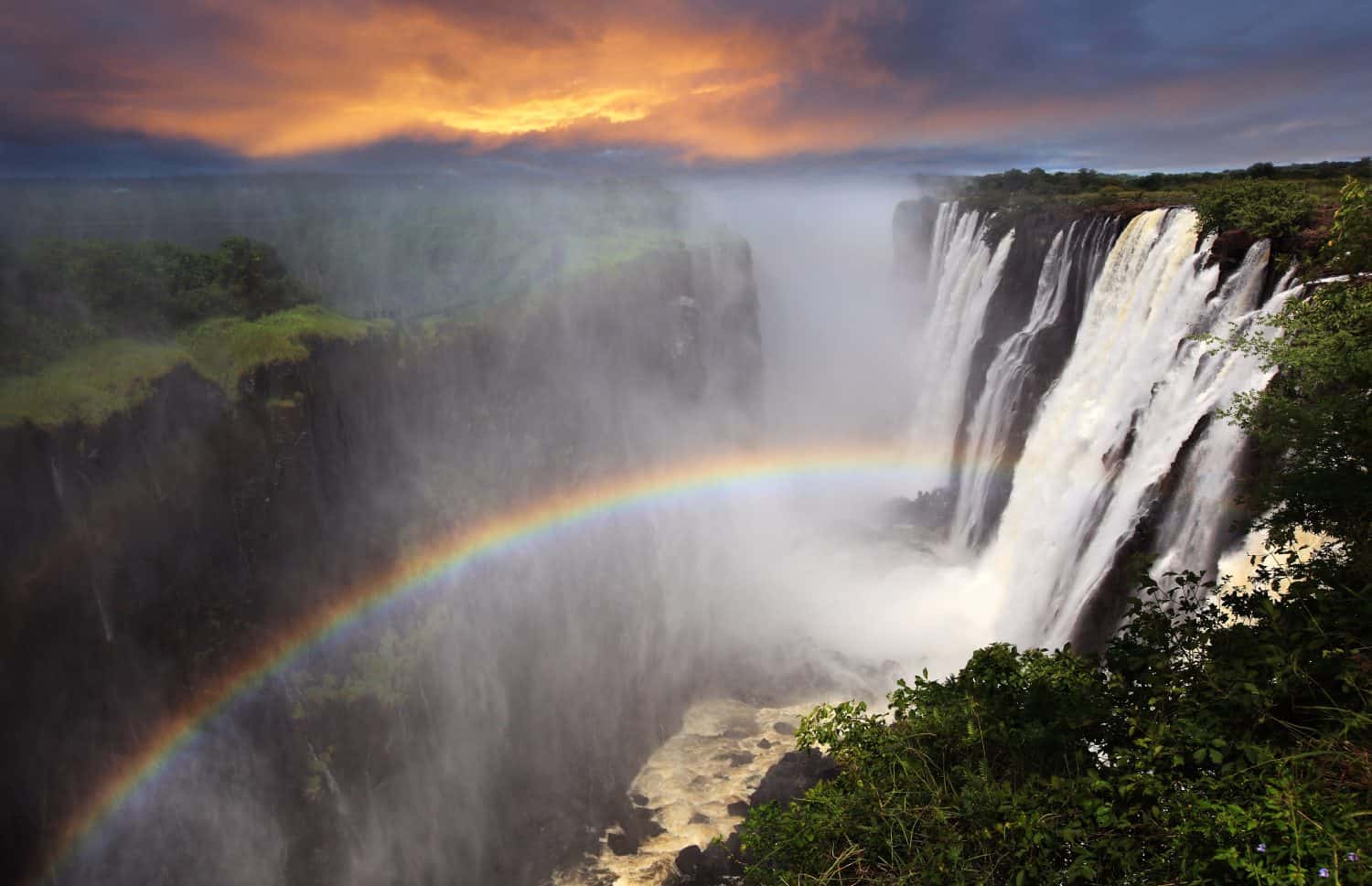
- Location: Zambia and Zimbabwe
Victoria Falls is spectacular for many reasons. First, it is the world’s largest waterfall because of its width and height. The mist the Falls give off offers spectacular views, including the rainbows that happen under a full moon.
Aurora Borealis
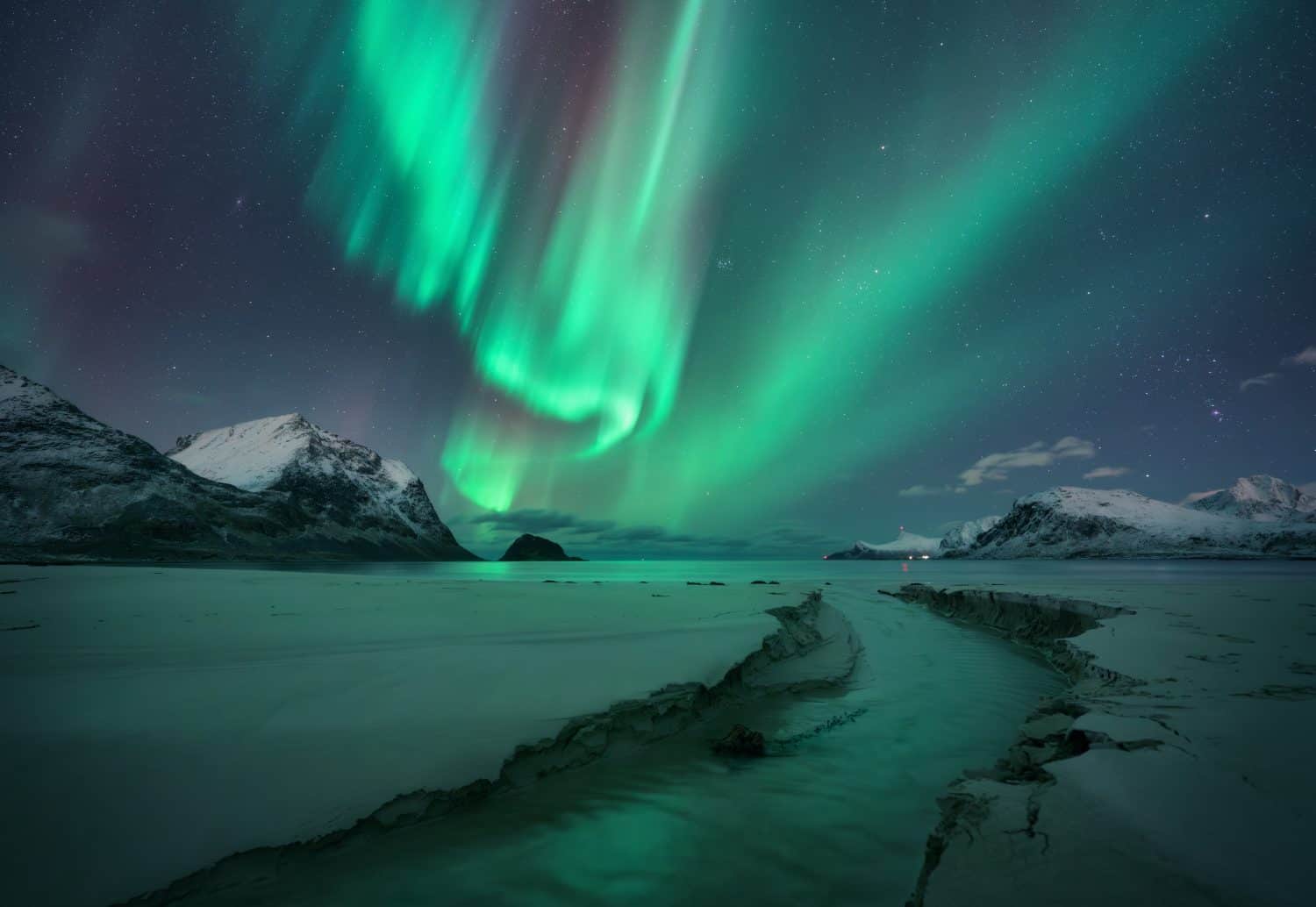
- Location: The Arctic
The Aurora Borealis, or the Northern Lights, is one of the most beautiful wonders on earth. They can occur when the sun and the Earth’s atmosphere interact in several places.
This beautiful light results from gases in the atmosphere and the earth’s magnetic field.
Lake Natron
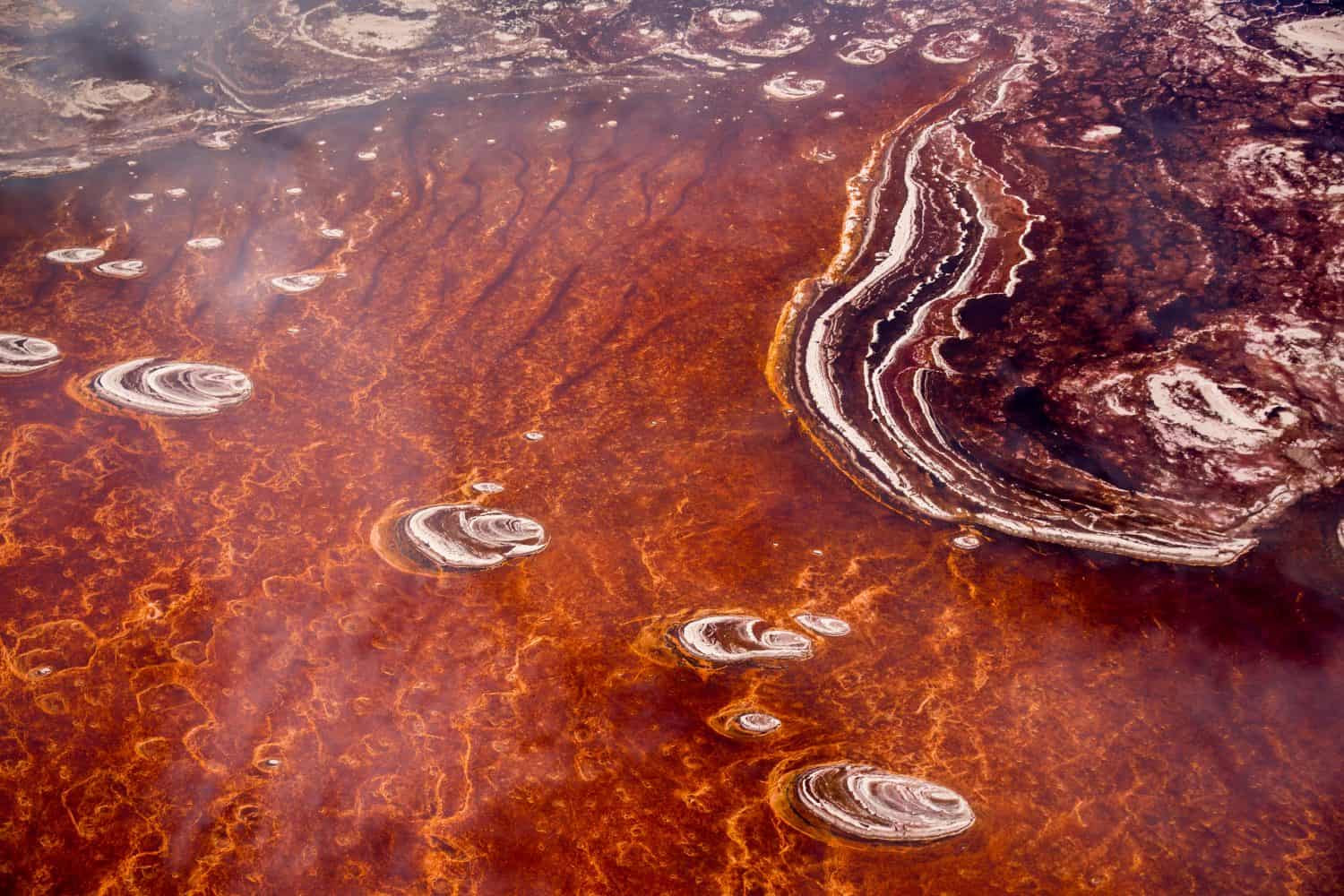
- Location: Tanzania, Africa
Lake Natron is unique, yet it can be dangerous. The lake has no outlets, and the water that comes in goes through the volcanic material nearby. This makes the water very alkalinic and poisonous; however, flamingos thrive in this area!
Since the algae in the water thrives on hypersaline, the lake can sometimes look red.
The Great Blue Hole
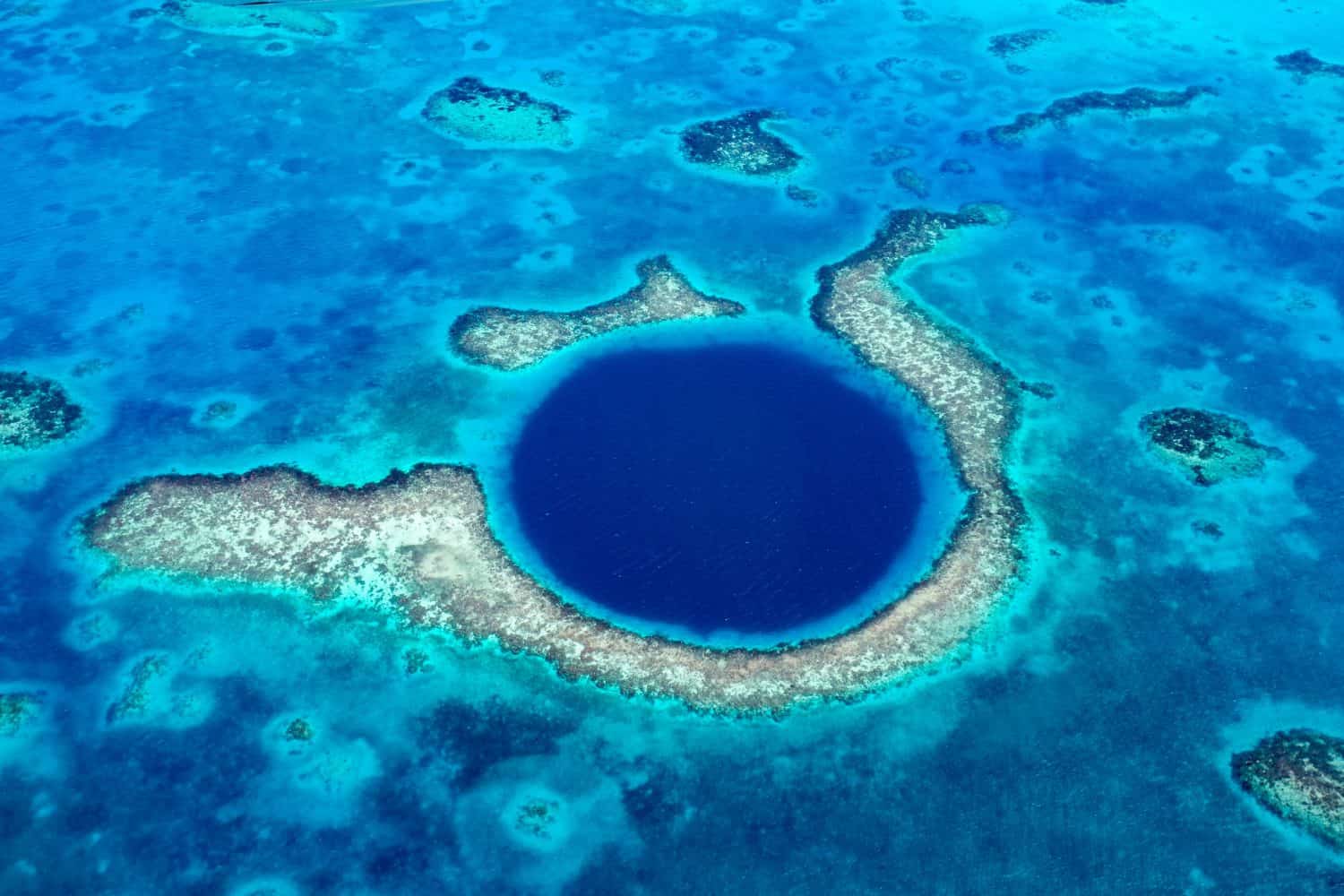
- Location: Belize
The Great Blue Hole is a deep sinkhole in Belize. It is part of the Belize Barrier Reef System, and while many tourists flock to this destination, only experienced, expert divers are allowed to descend.
The Great Blue Hole is over 100 meters deep and can be seen from space.
Ha Long Bay

- Location: Vietnam
Described as one of the world’s prettiest seascapes, Ha Long Bay comprises around 1,600 inlets and islands, as well as caves and grottoes. The area is uninhabited by humans, allowing the natural beauty to remain intact.
Grand Canyon
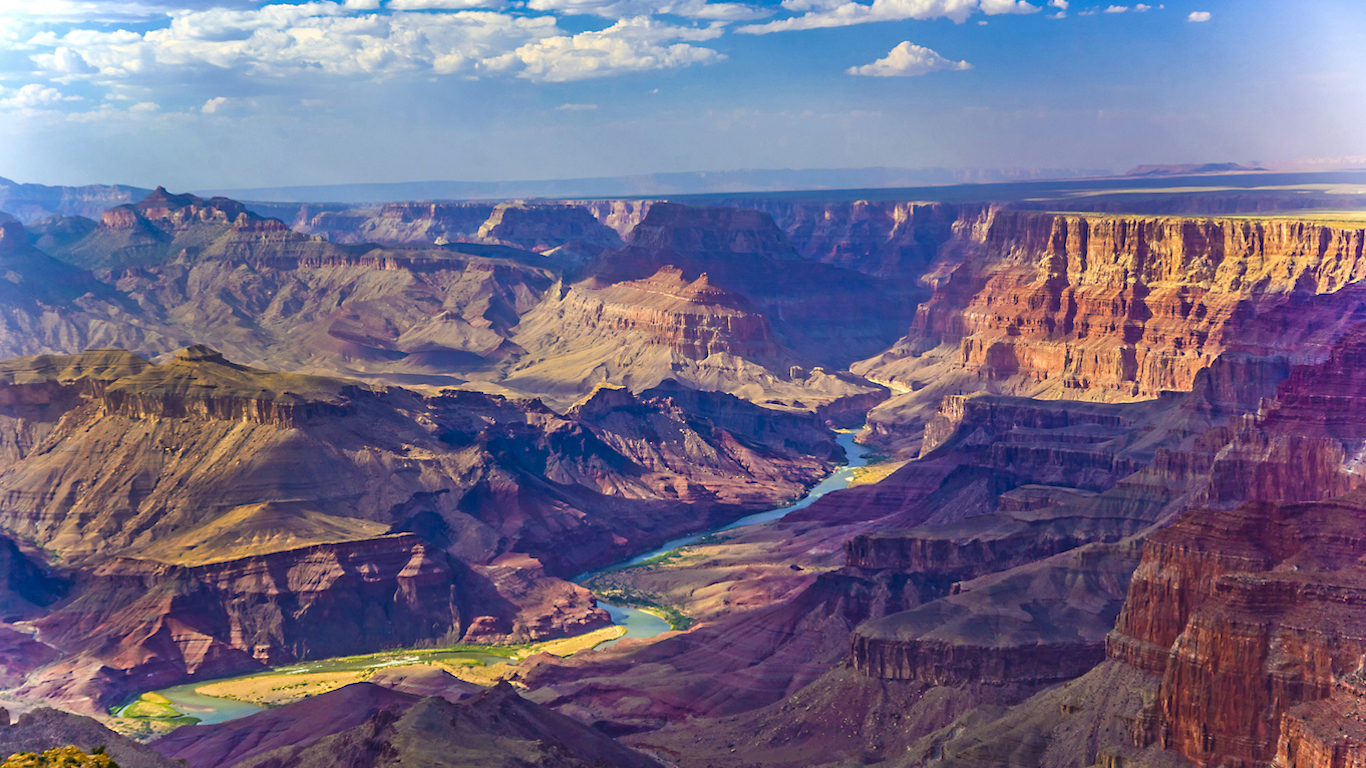
- Location: United States, touches four states: Arizona, Nevada, Utah, and Colorado
The Grand Canyon is a popular destination in the United States. While it’s not the longest or deepest canyon on Earth, it’s still a magnificent wonder. Between the beautifully colored rocky canyons and the rivers, it remains an incredible world marvel.
Niagara Falls

- Location: Canada and the United States
Although Niagara Falls is not the tallest waterfall in the world, it is a powerful and intense wonder. Around 6 million cubic feet of water flows over the edge at peak hours.
Apart from its power, the beauty of Niagara Falls also comes from its beautiful green hue. This hue comes from the water’s speed and erosive force, the sandstones underneath the limestone cap, and the salts in the water that have been dissolved.
Mammoth Cave
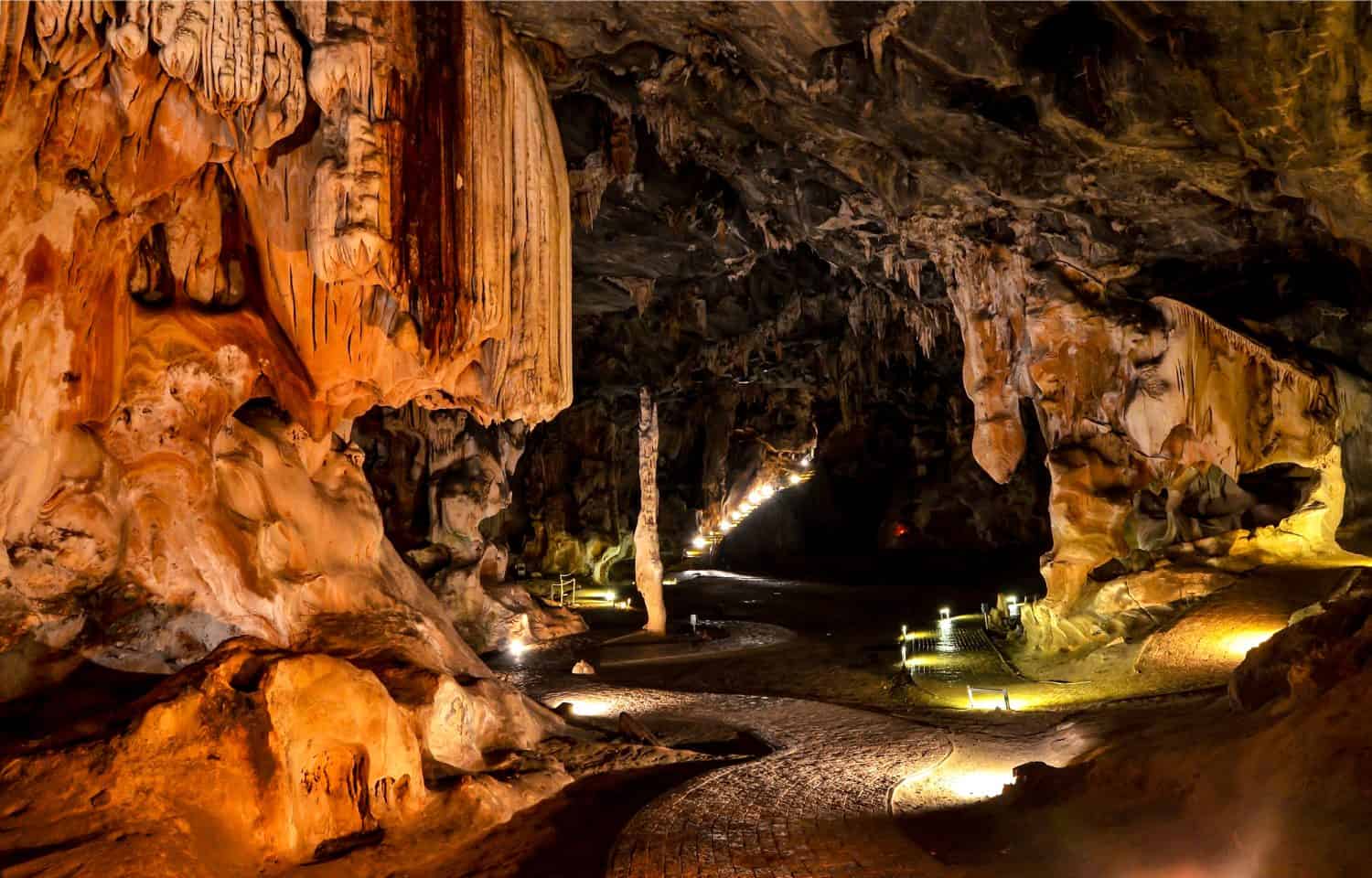
- Location: Kentucky
In Kentucky sits the world’s longest-known cave system, with over 405 miles discovered. While the caves don’t have any bright colors to admire and can feel a bit much for those who do not like enclosed spaces, Mammoth Cave is quite a splendor to behold. These caves have a plethora of history between the vertical shafts, keyhole passages, and tube passages.
Redwood National Forest

- Location: California
In California, the beautiful Redwood National Forest grows, the tallest tree species on Earth. One reason for its successful growth is that this species is remarkably fire-resistant. While it isn’t exactly fireproof, it can withstand intense fires. (Read about the most stunning natural attractions in each state.)